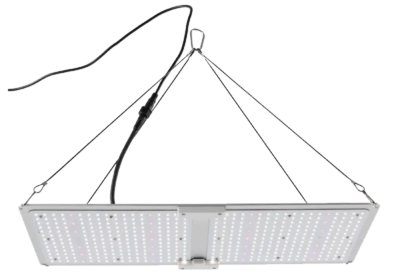Indoor Growing: Easy Way to Learn
Build your grow space or room!
If you're a new grower, growing cannabis indoors is a great way for beginners to learn about growing cannabis. At first, setting up the equipment and caring for plants might seem complicated but it's actually easier than it looks. You can easily set up the necessary equipment like grow lights, ventilation systems and humidity controls. Once everything is in place, taking care of your plants becomes a routine process. All you need is patience and a willingness to learn, so you'll produce better yields and healthier plants, which means you can achieve impressive results with the right setup and guidance.
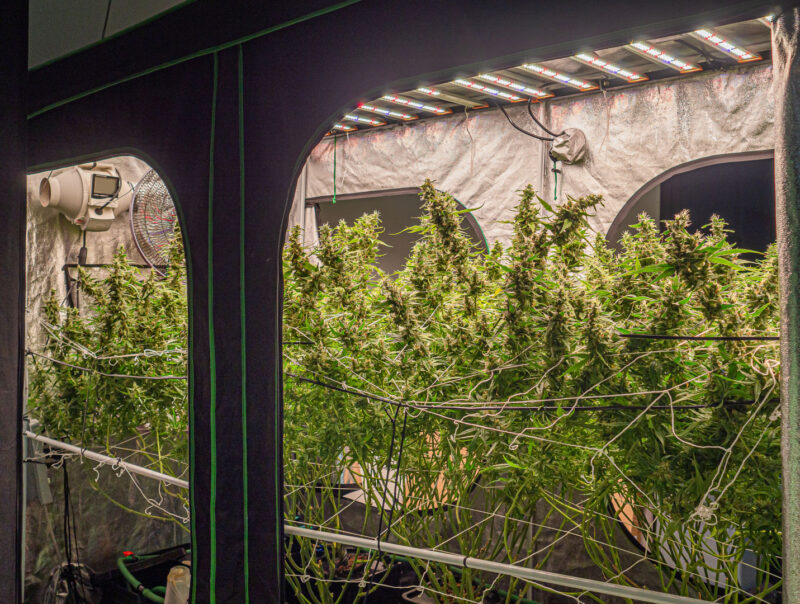
Some growers in urban areas still grow cannabis in their gardens but most of them prefer to grow indoors to protect their plants from thieves. Outdoor plants can attract unwanted attention, thus increasing the theft risk in densely populated areas. Indoor growing keeps plants out of sight and provides a secure, private space for your new hobby.
A major advantage of indoor growing is maintaining a continuous cycle that produces a crop every ten to twelve weeks, unlike outdoor growers limited to one annual harvest.

For unlicensed growers, the risks are even greater. If the police get a warrant to search your home, you and your family could face risks. You might be arrested and jailed, and there is also a chance of violence during the raid. Additionally, your home could be severely damaged during such an operation.
Building Your Indoor Grow Space
First, get the area ready where your indoor plants will grow. This could be a whole room, a closet, a special grow tent, or a sectioned-off area in your basement or garage. Think of this space as your plants' home thus it's important to set it up carefully to help them grow and to make your growing efforts successful.
Here are the basic and essential supplies you need to begin growing cannabis indoors:
- A prepared space to grow in, such as a grow room or tent
- Grow lights
- Fans for air circulation
- An odor-control system, typically with carbon filters
- Air intake and exhaust system
- Thermometer to monitor temperature
- Hygrometer to measure humidity levels
- Pots or containers for your plants
- Soil or a soilless growing medium
- Soil amendments to improve growth
- Cannabis seeds, cuttings, clones, or seedlings
Grow Room or Tent
Most indoor growers start with a single grow room, this is a practical choice until you decide if indoor growing is right for you. Experienced growers often use two grow rooms: one for the vegetative stage and another for the flowering stage. This method allows for continuous cycling and harvesting of cannabis. If you want to increase production, using two grow rooms is an effective strategy.
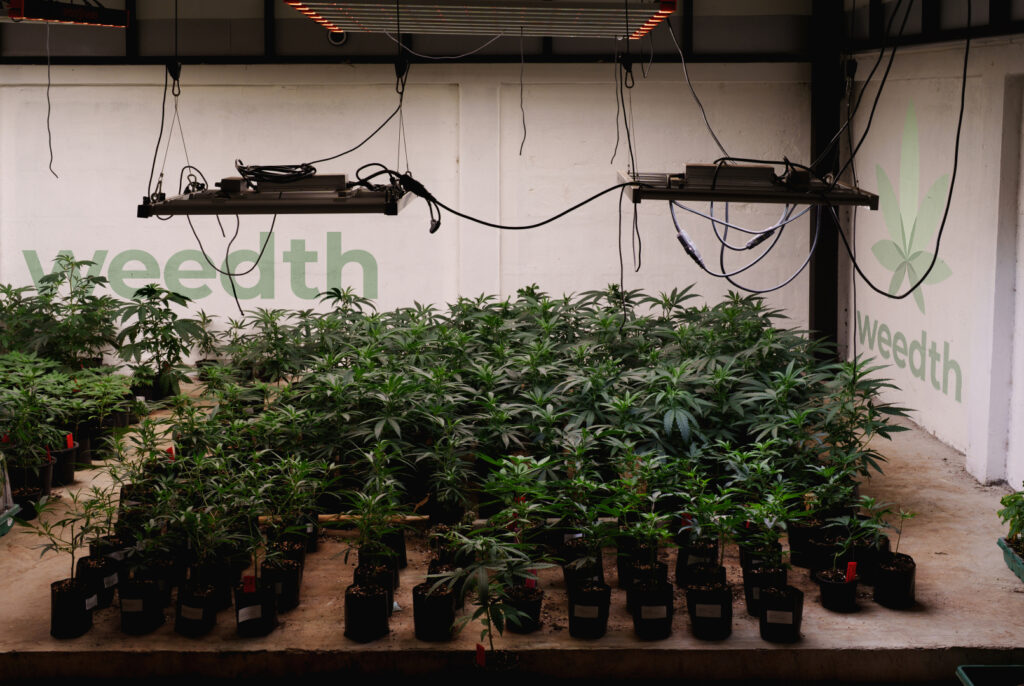
Make sure the grow area has access to electrical outlets that are in good working condition. Growing indoors uses a lot of electricity and places a significant power load on the electrical system, and many setups have caught fire due to poor or cheap electrical work. Remember, this is also where you live, so a fire could result in the loss of far more than just your plants.
It would be ideal to locate your grow rooms in a basement. There are several advantages to this: basements are usually separate from the main living area and less likely to attract visitors' curiosity. The temperature in a basement is generally very stable, making it easier to manage climate control and block light leakage. Additionally, basements provide better security, making it more difficult for thieves to access your grow space than other areas of your home.

Grow tents and closets are great for those with limited space or who want a more discreet option. Grow tents are designed for indoor growing, allowing you to easily control an environment that manages light, temperature, and humidity. They can be set up in any room, which makes them flexible and convenient. Closets can be converted into grow spaces with the right lighting and ventilation. They use existing space efficiently, perfect for growers who don't want to dedicate an entire room to cannabis grow. Both options provide a contained environment, minimizing odors and keeping light confined to the growing area, which enhances safety and control.

Grow tents or closets are especially useful for growers in apartments or shared living spaces. They offer a compact and efficient way to grow cannabis without taking over living areas. These setups keep your activities private.
Wherever you choose to set up your growing space—whether it's a specific room, a basement, a grow tent, a closet, a computer case, or a space bucket—you can create the ideal environment for growing high-quality cannabis indoors.
Grow lights
Lights are important for growing cannabis indoors and you must know how to choose the right type of light system that best suits your budget and your growing goals. You must know the different types of lights, such as LED, HID, CFL, and fluorescent lights while learning how light systems will impact plant health, yield rate, and bud quality. Lights are available in different shapes, sizes, wattages, and types, giving growers the option to choose what works best for them. A complete indoor grow light kit should include a bulb, reflector, ballast, timer, and electrical inputs/outputs.
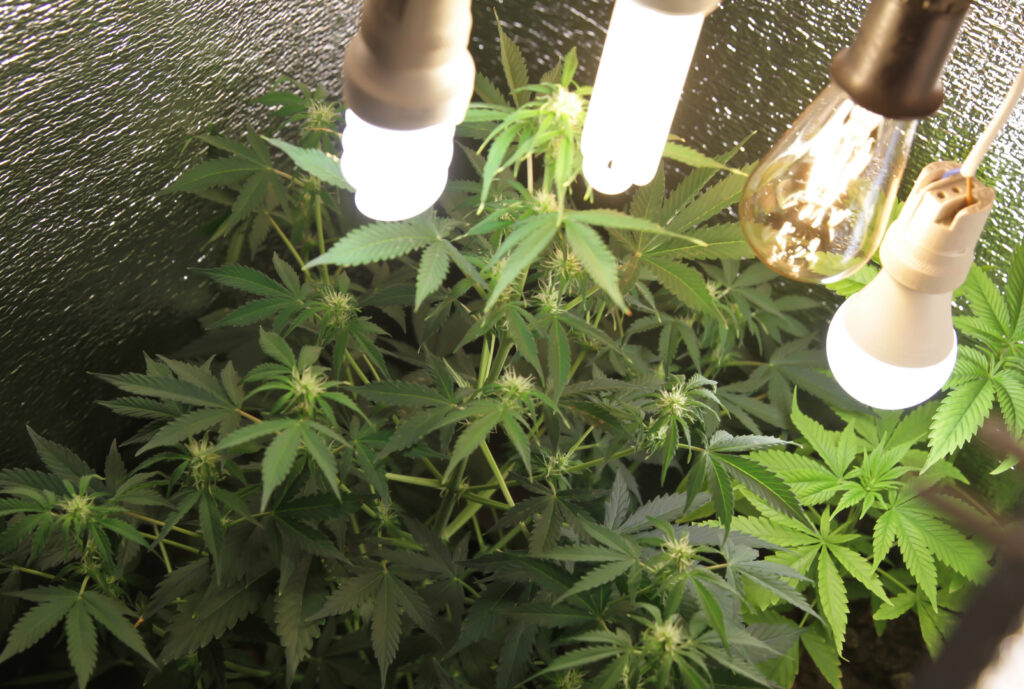
Most light kits are open, meaning the bulb hangs directly under the reflector without a hood or glass cover. The bulb is fixed into a socket inside the reflector, which is connected to the ballast. The ballast can be internal or external. If it's external, a cord will lead from the bulb's socket to the ballast. The ballast plugs into a standard household light socket. Some ballasts even have built-in timers.
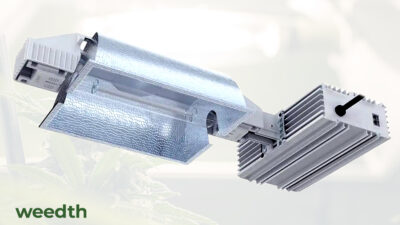
When you are buying a light system, it is recommended to purchase a complete system and an extra bulb. Make sure that the light system meets safety regulations and comes with a guarantee. This helps to avoid any safety issues and ensures the system's reliability and performance. Additionally, choosing a system with a warranty provides legal safeguards to protect your investment.
LIGHT BANDS
The light spectrum is basically the range of colors we can see with our eyes. Think of it like the colors you see in a rainbow: red, orange, yellow, green, blue, indigo, and violet. Each of these colors comes from different types of light waves and when they come together, they create that amazing rainbow effect. When combined, these colors create white light.
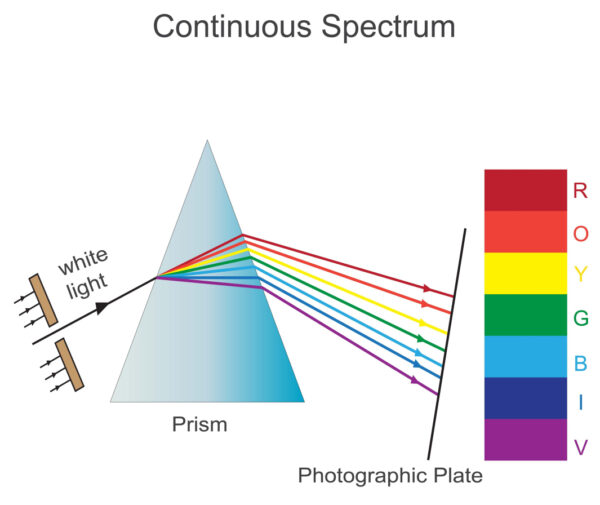
Artificial lights often have a slight tint of one of these colors, such as red-orange or blue, because the materials used in their production emit specific wavelengths. This means that while artificial lights can produce white light, they may lean towards one part of the spectrum more than others.

Cannabis grows under light from the middle spectrum ranging from orange to indigo to grow well. The best light covers the full spectrum like sunlight. For artificial lights, it's better to choose ones that concentrate on the upper part of the spectrum.
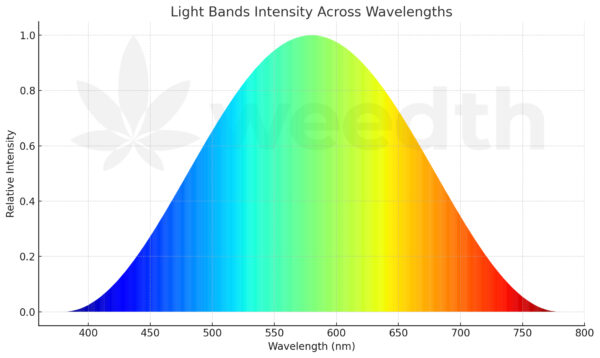
HID (High-Intensity Discharge) lights are the most common indoor light systems. They are popular because they closely mimic the natural sunlight that cannabis plants grow under. Don't worry, you'll see all the different kinds of lights used in grow rooms.
There is each phase of cannabis growth responds best to different light spectrums:
- Blue light (400-500 nm) is used during the vegetative phase, promoting robust leaf and stem growth.
- Red-orange light (620-780 nm) is used in the flowering phase, enhancing bud formation and development.
- Full-spectrum light can provide a balanced spectrum that supports all stages.
It's important to understand the color spectrum because different light wavelengths affect different phases of plant grow. Blue light helps plants grow their leaves and stems, while red and orange lights are more about making them flower and sprout buds. If you want to cover all the growth stages, using full-spectrum lights or a mix of Metal Halide (MH) and High-Pressure Sodium (HPS) lights can really help. Full-spectrum LED lights are also a great choice since they provide all the right colors for both the leafy and flowering stages in one fixture.

Choosing the right light spectrum for your plants helps them grow better and produce high-quality buds.
WATTAGE AND LUMENS
Lumens are basically a way to measure how bright a light is. They give you an idea of how much light you can expect from a light bulb or any other light source. This measurement shows how bright the light looks to us, but it doesn’t really address what cannabis plants need. If you’re growing cannabis, you’ll want at least 2500 lumens for every square foot. Higher lumens improve light penetration and plant growth. More lumens mean better light distribution and coverage, which is essential for larger grow areas or more densely packed plants. Enough lumens make sure all plants get enough light, so they grow evenly and produce same amount of yield.
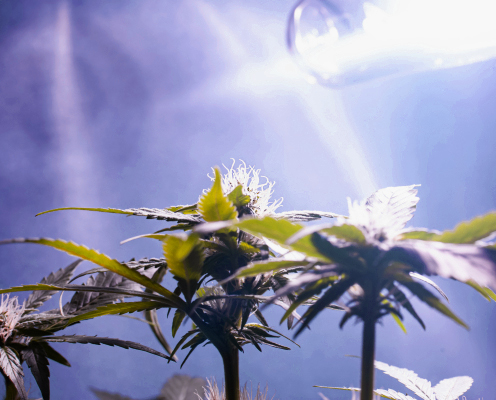
HID lights range from 75 to 4000 watts. Stronger wattage generally means more light but lumens are the best measure of light output. A good light kit will provide high lumens.
Wattage basically tells you how much energy a light bulb uses, and it’s super important for indoor growers since it affects energy bills and how much light is produced. Generally, high-wattage lights give off more light, which can help plants grow, but that can also mean bigger energy bills. That said just looking at wattage isn’t enough to figure out how effective a light is for growing cannabis. It doesn’t measure the quality or spectrum of light, which are key for helping plants with photosynthesis.
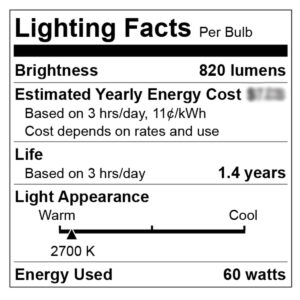
Let’s take a 600W light fixture as an good example. If it’s rated at 600W, it’ll use that much power for every hour it’s running. Figure out the cost, just multiply the total kilowatt-hours (kWh) you used by what your electricity provider charges for each kWh. This easy calculation gives you a good idea of how much you’re spending on grow lights over time. Power consumption is tied to the amount of light (measured in lumens) the fixture puts out, but don’t forget to think about the quality of that light too. The lumens from a 600W light can change a lot depending on the type of bulb. While it gives off a lot of light, how beneficial it is for the plants really depends on the type of light and its spectrum.
Here's an example to clarify wattage and lumens: A standard 600W High-Pressure Sodium (HPS) light can emit around 90,000 lumens delivering intense brightness but this doesn’t necessarily mean the light is within the ideal spectrum that plants need for growth. HPS lights are known for their high efficiency when it comes to lumens per watt and the light they emit mostly falls within the yellow and red parts of the spectrum. This spectrum range is beneficial during the flowering stage but ineffective during the vegetative phase, which grows under blue light(MH lamp). Consequently, while HPS lights are excellent for flowering, they are not the best choice for seedling or vegetative stages. This is why growers may need to consider other factors beyond lumens when selecting light for indoor growing.
Compare the lumens of the same watt LED and HID lights.
LED lights are a lot more energy-efficient than HID lights because they give off more lumens per watt. A lot of growers still go for HID options like High-Pressure Sodium (HPS) and Metal Halide (MH) since their light spectrum is pretty close to natural sunlight. This spectrum covers a broader range of wavelengths that plants need, giving off a balanced and intense light quality that helps cannabis plants thrive during both the vegetative and flowering stages.
While LEDs are becoming more popular due to their energy efficiency and lower heat output, the spectral quality and intensity of HID lights make them a favored choice for achieving robust plant growth and higher yields.
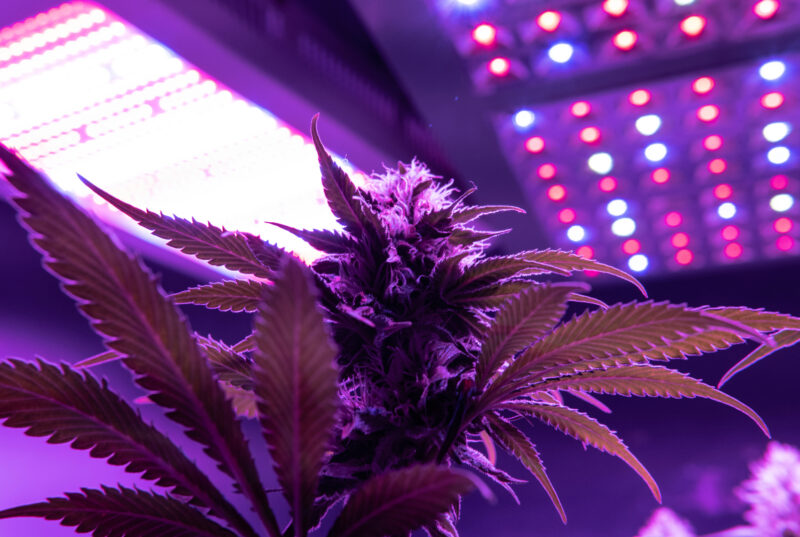
When selecting lights for growing cannabis, it's important to balance wattage and lumens with these factors:
- Spectral output: Metal Halide (MH) lamps work great during the vegetative stage because they emit a lot of blue light, while High-Pressure Sodium (HPS) lamps are better for the flowering stage since they shine more red light.
- Energy efficiency: LED grow lights are favored for their lower energy consumption and less heat output. They often come with adjustable spectrums, making them versatile through all growth stages.
- Heat management: Higher wattage bulbs generate more heat, which can stress plants and may require additional ventilation or cooling systems to manage.
Summary:
- Lumens measure the brightness of a light source. It tells you how much visible light is emitted by a bulb or other source.
- More lumens = brighter light.
- Lumens are the most useful measurement for determining how well a light source will illuminate a space.
- Watts measure the power consumption of a light source. It tells you how much electrical energy the light uses.
- More watts ≠ more brightness.
- For older incandescent bulbs, more watts typically meant more light, but with modern efficient bulbs (like LEDs), this is no longer true.
Now that you know enough about lights, it's time to choose a light system that suits your budget and needs!
OPTIMAL LIGHT SYSTEMS
High-Intensity Discharge(HID) Lights: These professional lights are known as HID lights. These lights are carefully made and tested by experts in gardening technology. They usually come as complete packages that include a bulb, a reflector, a ballast (which helps regulate the light), and a timer. You can find them in different sizes and strengths to match your specific needs. If you're looking to grow high-quality cannabis or any other plants, an HID light is a great choice because it provides the right amount of light and color that plants need at different stages of growth. There are also different types to choose from, like Metal Halide (MH) for the vegetative stage, High-Pressure Sodium (HPS) for flowering, Dual Spectrum HPS that works for both stages, and the more advanced Ceramic Metal Halide (CMH), which mimics natural sunlight and is energy-efficient. Whatever stage your plants are in, there’s an HID light that can get the job done.
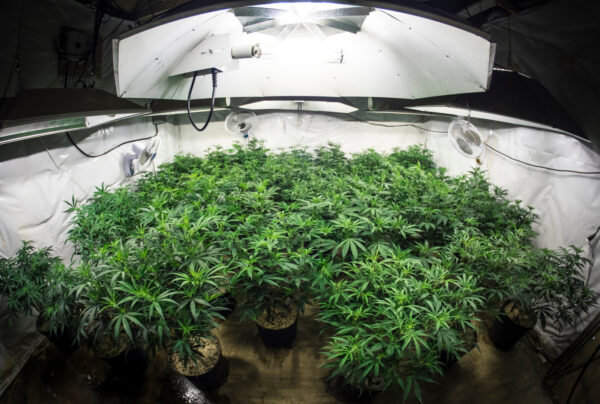
Metal Halide (MH): Popular choices for seedling and vegetative stages, MH lights range from 75 to 4000 watts and emitting a blue-white light that encourages vegetative growth. Nowadays, most growers prefer MH lights because they are particularly good at promoting healthy growth in young plants.

High-Pressure Sodium (HPS): Many growers prefer HPS lights because they are best for the flowering stage. They come in a range from 75 to 4000 watts. These lights give off a warm red-orange glow that really helps buds develop, making them a top choice for that part of the growing process.
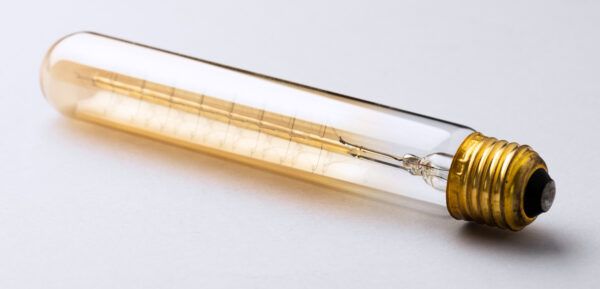
Dual Spectrum HPS Lights: Combining the best features of Metal Halide (MH) and High-Pressure Sodium (HPS) lights, giving you a nice mix of blue and red light. This makes them great for both the growing and flowering stages, so you won’t need to deal with different bulbs.

Ceramic Metal Halide (CMH) Lights: CMH lights are an advanced type of High-Intensity Discharge (HID) light. They emit a full spectrum of light similar to natural sunlight, which is great for all stages of cannabis growth. Plus, they’re energy-efficient, last a long time, and budget-friendly option for growing indoors.

Note: Avoid HID lights over 2000W as they can be too intense and hot. Instead, use multiple 1000W bulbs if more light is needed; this will help spread the light more evenly and keep heat levels manageable.
LIGHT SYSTEMS that are low-cost and effective
Light Emitting Diodes (LEDs): LED lights are leading the way in lighting technology for growing cannabis. They allow for adjustable light spectrums and intensities, making it easy to support plants through every growth phase from vegetative to flowering. Although the upfront cost is higher, LEDs deliver substantial long-term savings on energy, and their potential to boost yields has made them a preferred choice among dedicated growers. Yeah, they might set you back a bit at first, but they save you a bunch of money on energy bills in the long run. A lot of growers these days say that LEDs produce bigger and better harvests. It’s no surprise that they’ve become such a popular choice in recent years!

Compact Fluorescent Lights (CFLs): CFLs are perfect for small grow space setups or beginner growers because they are affordable and energy-efficient. These lights help reduce initial costs and lower ongoing electricity expenses. Producing minimal heat, CFLs can be placed close to plants without risking heat damage, making them safe and manageable in confined areas. CFLs are available in different wattages and spectrums, allowing growers to select bulbs that best match the specific needs of different grow stages.
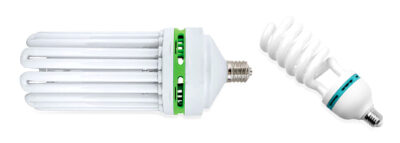
T5 Fluorescent Lights: T5 fluorescent lights are more efficient and brighter than regular fluorescent tubes, making them an excellent option for spaces where height is limited. They provide intense light that covers a wide range of colors, which is particularly useful for helping plants grow during their early stages.
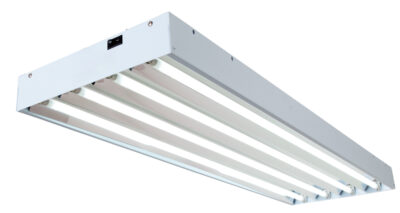
Fluorescent Tube Lights: These long industrial lights are found in schools and workplaces and range from 10 to 300 watts. They are okay for growing but not ideal due to low intensity and unsuitable spectrum. Fluorescent lights can be used for seedlings or clones but are not powerful enough for mature plants.

POOR LIGHT SYSTEMS that are not recommended
Domestic Lights: These are regular household lights, ranging from 15 to 150 watts. They are not suitable for growing cannabis due to low intensity and poor color spectrum. These lights lack the necessary intensity and spectrum to support healthy plant growth.
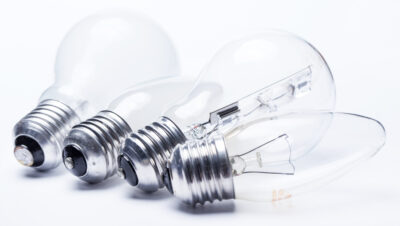
Incandescent Lights: These lights aren’t suitable for growing cannabis. They’re inefficient and don’t produce the specific light wavelengths that plants need for healthy growth. Never use those lamps for growing!
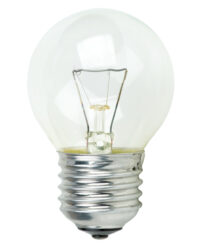
Halogen Lights: Commonly used for outdoor floodlighting, these range from 75 to 4000 watts. They get extremely hot and are not recommended for growing cannabis indoors due to safety concerns and unsuitable spectrum. The excessive heat from halogen lights can damage plants and create fire hazards.
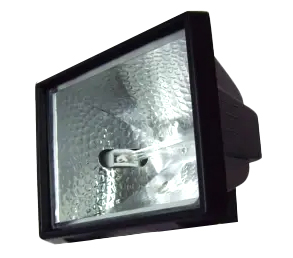
Mercury Vapor Lights (MV): These lights, though once used in horticulture, are outdated and not suitable for cannabis cultivation. They emit mostly blue light, which limits their effectiveness to the vegetative stage, and they lack the red light necessary for flowering. Mercury vapor lights are also energy-inefficient and produce excessive heat, which can harm plants. Additionally, they contain hazardous mercury, posing environmental and safety risks. Avoid using these lights for growing cannabis.
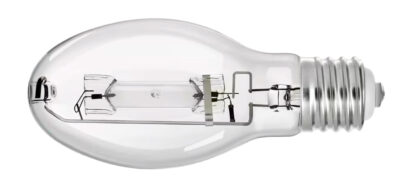
Deciding to Choose Light System
Why Prefer HID Lights?
Despite the efficiency and customization of LEDs, many growers prefer HID lights for several reasons:
- Spectrum Similarity to Natural Sunlight: HID lights, especially Metal Halide (MH) and High-Pressure Sodium (HPS) lights, emit a spectrum of light that closely mimics natural sunlight. This broad spectrum is beneficial for plant growth throughout all stages, from vegetative to flowering.
- Proven Track Record: HID lights have been a staple in horticulture for decades, providing a reliable and consistent light source for larger cultivation operations. Their proven effectiveness in promoting robust plant growth and maximizing yields is well-documented, making them a trusted choice for seasoned cultivators seeking dependable outcomes.
- Cost-Effectiveness: HID lights are often more affordable upfront compared to high-quality LED systems. For large growing operations, the initial investment in HID light can be lower, making it a more accessible option for many growers.
- High Intensity: HPS lights are valued for their intense light output, especially important during the flowering stage when plants need extra light to develop large, dense buds.
Why Prefer LED Lights?

LED lights are a popular choice for indoor growers for several good reasons:
- Energy Efficiency: LEDs use energy more efficiently than HID lights. They convert more electricity into light instead of heat. This results in lower energy bills and a smaller impact on the environment.
- Long Lifespan: LED lights generally last far longer than HID lights. While HID bulbs might need replacing every year. LEDs can keep going for years, reducing the frequency and cost of replacements.
- Customizable Spectrum: LEDs can be designed to emit specific wavelengths that best support different stages of plant growth. This means growers can customize the light to boost photosynthesis, which can lead to healthier plants and better yields.
- Lower Heat Output: LEDs generate significantly less heat than HID lights, reducing the risk of heat stress on plants. This lower heat output also means less reliance on cooling systems, further reducing energy costs and simplifying environmental control.
Why Prefer CFL Lights?
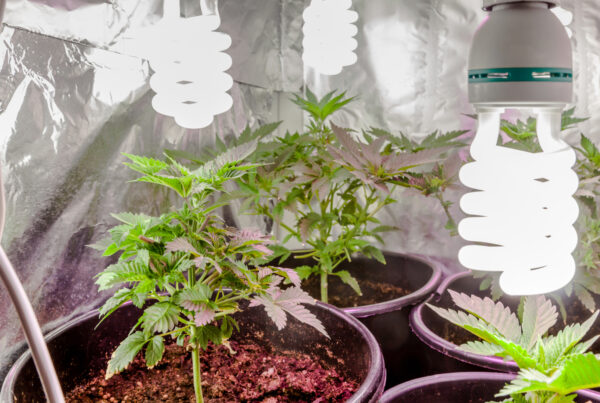
Compact Fluorescent Lamps (CFLs) offer benefits that make them a practical choice for some indoor growers:
- Affordability: CFLs are usually cheaper than many other types of grow lights, such as LEDs and HIDs. This makes them a great option for beginners or small-scale growers who have a limited budget.
- Low Heat Output: CFLs produce less heat compared to HID lights. This lower heat output reduces the risk of heat stress on plants and minimizes the need for extensive cooling systems, making temperature management easier.
- Ease of Use: CFLs are beginner-friendly, easy to set up and use. They typically come in standard socket sizes and do not require specialized fixtures or ballasts. This makes installation simple for new growers.
- Energy Efficiency: While not as energy-efficient as LEDs, CFLs are more efficient than traditional incandescent bulbs, converting more electricity into light and less into wasted heat.
- Flexibility in Placement: CFL bulbs are available in various shapes and sizes, allowing for flexible placement and positioning. Growers can place them close to plants without risking burns, which is ideal for small or compact grow spaces where light coverage matters.
- Suitable for Small Spaces: CFLs are a good fit for small grow tents, closets, or other confined areas. Their low heat output and compact design mean they won’t overheat tight spaces where larger lights may be impractical.
- Full Spectrum Options: CFLs are available in different color temperatures, including daylight (5000-6500K) for vegetative growth and soft white (2700-3000K) for flowering stages. This variety allows growers to choose the right spectrum for each growth stage using CFLs.
- Low Initial Investment: The affordability of CFLs makes them a great for hobbyists or beginners. They allow new growers to try indoor cultivation without a big upfront cost.
- Availability: You can easily find CFLs in most hardware stores. This makes them a convenient choice if you need to quickly add or replace lights in your grow setup.
Grow Lights Components
For a complete and effective grow light setup, you'll need:
- Ballasts for HID lights.
- Lamp Holders to securely house and connect bulbs to the power source
- Reflectors to maximize light efficiency.
- Bulbs/Lamps appropriate for your grow stage (HPS, MH, or LED).
- Drivers for LED systems.
- Timers to automate light cycles.
- Light Hangers to adjust light height.
- Cooling and Ventilation Systems to manage heat.
Ballasts
Ballasts are a key component in many grow light systems, especially for High-Intensity Discharge (HID) and fluorescent lights. The ballast is crucial for regulating the current to the bulbs. Ballasts can be either magnetic or digital. Digital ballasts are more efficient, produce less heat, and often include features like dimming and compatibility with multiple bulb types. Magnetic ballasts are cheaper but bulkier and less efficient. A digital ballast can also adjust to different bulb wattages, making it more versatile.
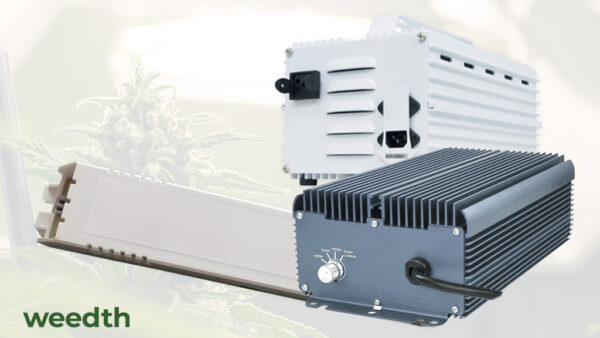
Note for Safety: Keep electrical outlets away from plants and water to avoid accidents. Safety is crucial to prevent electrical hazards and ensure a safe growing environment.
Lamp Holders
Lamp holders (commonly called "sockets") are essential for securely housing grow light bulbs. They ensure a proper electrical connection between the power source and the bulb. Lamp holders come in various types to accommodate different bulb bases, such as E27 or E40 for HID bulbs or specialized fittings for LED systems. High-quality lamp holders are built to resist heat and wear, especially in setups like HID systems where bulbs can reach high operating temperatures. Choosing the right lamp holder is critical for ensuring safety, as poor-quality or incompatible holders may lead to electrical issues, overheating, or even bulb failure. Additionally, regular inspection and maintenance of lamp holders are recommended to check for signs of corrosion, damage, or loose connections, which could compromise the efficiency and safety of the grow light system.
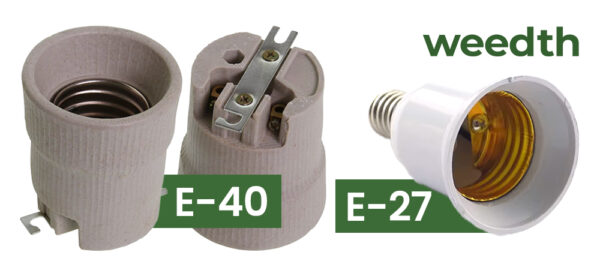
Reflectors
Reflectors are essential components in indoor grow light systems designed to maximize the efficiency and effectiveness of light distribution. Reflectors come in various designs, such as wing reflectors, air-cooled reflectors, and tube reflectors. Wing reflectors are the most basic and cost-effective but offer less control over light spread. Air-cooled reflectors help manage heat by allowing air to flow over the bulb, keeping the grow area cooler. Tube reflectors or cool tubes encase the bulb in glass with ducting on either end to allow for efficient air cooling. Reflectors with a polished or hammered finish can enhance light distribution by minimizing hot spots and providing an even spread of light. Choosing the right reflector can significantly impact light distribution and efficiency.

Note: Ensure your reflectors are white or polished metal, not colored or shiny. White reflects light best. Reflectors help direct light toward the plants to increase efficiency.
Drivers
Drivers are necessary components in ensuring that LEDs function optimally. Essentially, the driver regulates the power to the LED and provides a constant flow of electricity despite variations in voltage or current from the power source. This is important because LEDs are sensitive to changes in power supply. Without a stable driver, the lights will flicker, change in brightness, or degrade prematurely. A good driver not only extends the lifespan of an LED and also enhances its performance by maintaining consistent brightness and color quality. For anyone using LED grow lights, a reliable driver is essential to achieving efficient and effective lighting that supports healthy plant growth.

Timers
Timers are an indispensable tool for managing the light cycles in an indoor growing environment, especially for cannabis plants that need precise photoperiods to grow. Timers automate light scheduling and ensure a consistent light schedule that is crucial for both the vegetative and flowering stages. This ensures plants get the right light for photosynthesis and saves energy by avoiding unnecessary light usage. Additionally, using timers reduces manual effort and allowing growers to focus on other aspects of plant care while ensuring perfectly synchronized lighting with the plant's growth requirements. For any serious indoor gardener, integrating timers into the lighting system is a simple and effective way to improve plant health and streamline garden management.
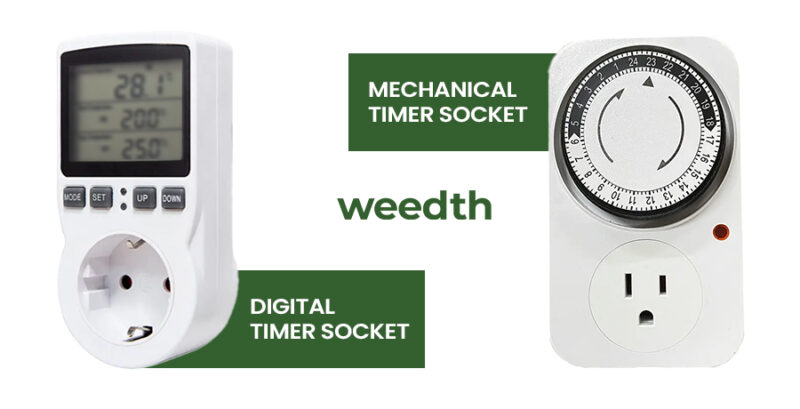
Note: You have to get a timer!
Light Hangers
Light hangers are super handy for indoor cannabis growers because they make it simple to adjust the height and placement of grow lights. These hangers keep the lights at the right distance from the plants, which is really important as the plants get taller. Light hangers allow growers can easily raise or lower the lights, ensuring plants get the right amount of light intensity.
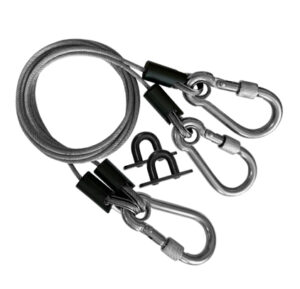
Remember: If grow lights are too close to plants, they can cause heat damage. On the other hand, lights placed too far away may not provide enough intensity, potentially slowing growth. Light hangers allow growers to fine-tune light placement throughout different growth stages, from seedlings to mature plants.
Cooling and Ventilation Systems for lights
Some grow lights like HID (High-Intensity Discharge) and some high-wattage LEDs can generate a lot of heat. If this heat isn't controlled, it can lead to an overly hot environment that hinders plant growth, potentially stressing plants and diminishing yields. Air-cooled reflectors can be used to directly channel heat away from the grow lights and out of the grow area using ducting systems. Additionally, oscillating fans and proper room ventilation play a key role in dispersing heat evenly and providing fresh air, which helps to prevent hotspots and maintain a consistent climate.
The most common cooling method for HID lights is air-cooled reflectors. These reflectors have an enclosure around the bulb that includes a glass shield and ducting ports. Cool air is drawn through the reflector by an inline fan connected to ducting, which passes over the bulb and carries away excess heat before it can raise the temperature in the grow area. This system effectively removes the heat directly at the source and vents it outside the grow room or tent, maintaining a cooler environment conducive to plant growth.
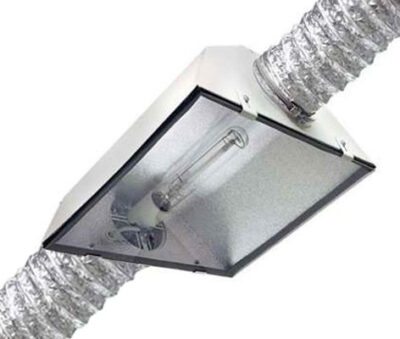
Some HID setups may use water-cooled systems, although these are less common due to their complexity and cost. In water-cooled systems, water circulates around the bulbs or the fixture to absorb heat, which is then carried away and cooled externally.
Some LED grow lights are designed with built-in cooling systems to manage heat more effectively. These systems usually feature heat sinks and fans. Heat sinks are components attached to the LED fixtures that draw heat away from the bulbs by increasing the surface area exposed to air, which enhances heat dissipation through convection. Additionally, fans may be integrated into the fixtures to actively cool the heat sinks by directing airflow over them, helping to keep temperatures down even more effectively.
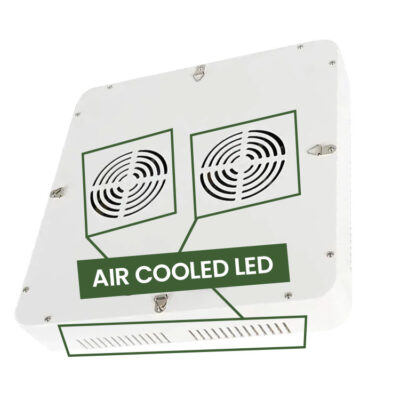
Note: Keeping grow lights cooler helps them last longer and work better, so they give off the best light for a longer time. Using these systems regulates the temperature and boosts light effectiveness in the grow room.
WHAT TO LOOK FOR WHEN BUYING A GROW LIGHT
- Type: Consider the type that best matches the growth stages of your plants. MH is for vegetative stage and HPS is for flowering. If you can only afford one, choose a dual-spectrum HPS or full-spectrum LED light providing the necessary wavelengths for vegetative and flowering stages in a single fixture.
- Certification and Condition: Ensure the light is safety certified (UL, ETL, CE) and in good shape.
- Cooling: Air-cooled lights last longer and keep your grow area cooler. If your light isn't air-cooled, you'll need to install ventilation.
- Support: Check if the light requires a stand or needs to be hung from the ceiling.
- Electrical Compatibility: Ensure the electrical fittings suit your needs. You might need an adapter or extension cord.
- Wattage and Lumens: Aim for lights that provide high lumens. Your choice depends on your budget and space.
- Spectral Adjustability: Some advanced LED systems allow you to adjust the spectrum settings to tailor the light to different growth stages or specific cannabis strains.
- Electrical Compatibility: Ensure that the light’s power requirements are compatible with your setup. You might also want to check if any adapters or extension cords are needed.
- Brand Reputation and Support: It’s a good idea to buy from well-known brands that offer reliable customer support and easy access to spare parts and services.
- User Reviews and Feedback: Take a look at reviews from other growers who have used the lights. This can give you insight into their experiences and any potential issues to watch out for.
- Spare Light: Always keep a spare light on hand to ensure it continues to grow in case of unexpected failures or during routine maintenance.
Ventilation and Climate Control
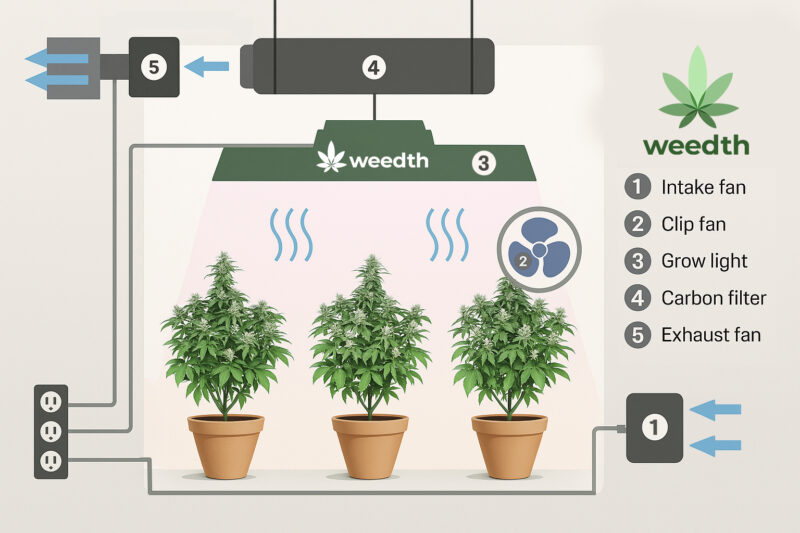
Air Circulation
Oscillating fans and other circulation devices ensure air moves evenly throughout the grow room. Airflow from fans mimics the natural wind, causing plants to develop stronger stems and branches. This is essential for supporting the weight of heavy buds during the flowering stage. Think of airflow like a mini gym session for your plants.
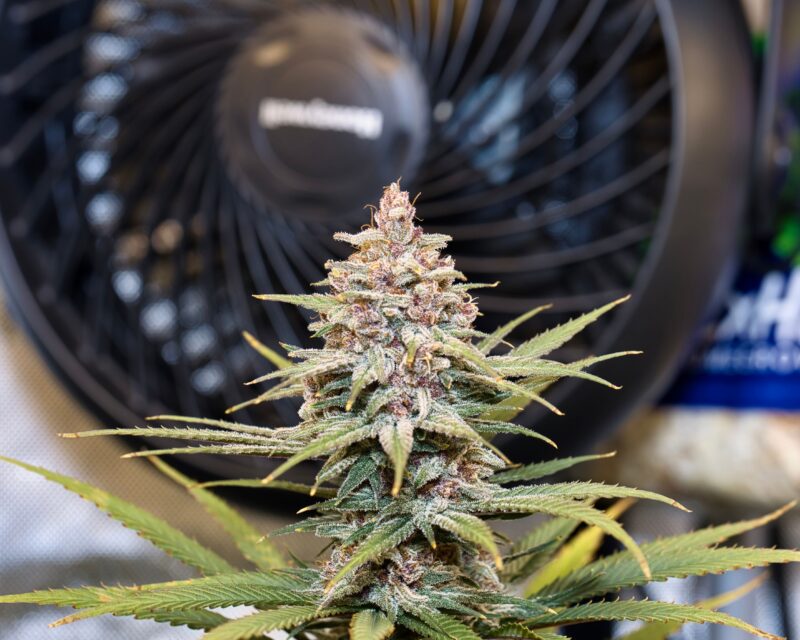
Good airflow makes it difficult for pests and diseases to take hold in a grow room. Many pests thrive in still, warm, and humid conditions, so keeping the air moving helps to break up these favorable conditions. Plus, good air circulation helps avoid hot or cold areas, keeping the temperature and humidity pretty consistent all around.
Air Exchange
Good ventilation means regularly replacing the air inside a space with fresh air from outside. This can be done using an exhaust fan to remove stale air and an intake fan or passive vents to bring in fresh air. Ideally, the entire volume of air in the grow room should be replaced every 1-3 minutes. This steady exchange provides a constant supply of carbon dioxide (CO₂), which is essential for photosynthesis.
Ventilation ensures fresh air is constantly moving through your grow space. This fresh air it supplies the carbon dioxide (CO2) necessary for photosynthesis, which is their food-making process. Stagnant air can lead to poor growth and weak plants. Just like you need fresh air to feel good, your cannabis plants need it, too!
- Oxygen: Plants take in oxygen and release carbon dioxide at night.Proper ventilation prevents the air in your grow space from becoming oxygen-depleted, which is vital for plant respiration.
- Carbon Dioxide: During the day, plants use carbon dioxide for photosynthesis that converts it into energy and oxygen. Good ventilation keeps fresh air flowing, ensuring there’s enough CO₂ to support strong for healthy growth.
Temperature Control
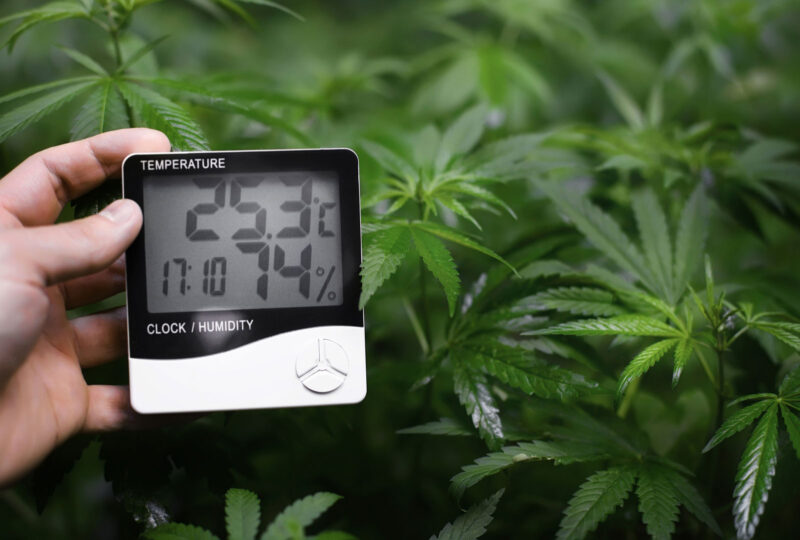
Cannabis plants require specific temperature ranges for optimal growth. Ideal temperatures are typically between 70-85°F (20-30°C) during the day and 58-70°F (14-21°C) at night. Heaters, air conditioners, and thermostats are commonly used by growers to monitor and adjust temperature levels. Ventilation systems play a crucial role in maintaining a stable climate by preventing temperature spikes, which can negatively affect plant health and growth. High-intensity grow lights can generate excess heat, leading to elevated temperatures without adequate ventilation. Effective ventilation systems help to expel hot air and introduce cooler air, thus sustaining optimal temperatures. Elevated temperatures can induce stress in plants and inhibit growth, while low temperatures may stunt growth and restrict nutrient absorption.
Humidity Management
Humidity levels need to be carefully controlled to prevent mold, mildew and ensure healthy plant transpiration. Cannabis plants grow best in 40-70% relative humidity during the vegetative stage. If leaves appear overly moist, it’s a sign that humidity might be too high. During the flowering stage, humidity should be lowered to around 40-50% to help prevent mold. High humidity can damage buds, leading to bud rot in flowering plants. Keeping the air moving and fresh helps maintain an optimal humidity range.
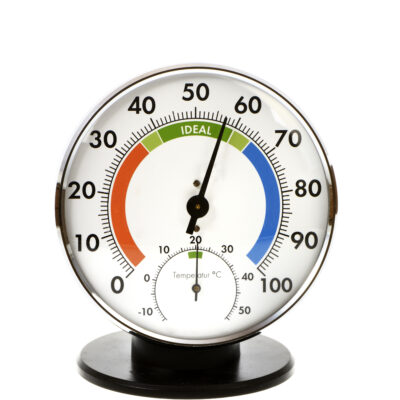
Note: Humidity levels vary depending on the strains.
Odor Control
Carbon filters manage the strong odors that cannabis plants produce. Incorporating carbon filters into your ventilation system can clean the air of these smells before they leave the grow space, keeping things discreet. Let's be honest, cannabis has a strong smell!
CO2 Enrichment
Advanced growers can improve plant growth and yield by adding extra CO2 to their grow rooms. They can use CO2 generators or compressed CO2 tanks to raise CO2 levels to about 1000-1500 ppm. This increase is helpful during the light hours when photosynthesis happens.

Integration and Automation
Modern grow rooms often use integrated climate control systems that automate the regulation of temperature, humidity, CO2 levels, and ventilation. Sensors and controllers continuously monitor environmental conditions, making adjustments as needed to maintain optimal growing conditions. Automating these adjustments, growers can sidestep potential human errors, creating a consistently stable setting that helps plants thrive and boosts overall yields.
Main Components of Ventilation System
- Inline Fans: They move air in and out of your grow area.
- Oscillating Fans: These help with air circulation within the grow area.
- Carbon Filters: These filters clean the air of strong cannabis odors.
- Ducting: This connects your inline fans and helps direct air where it needs to go.
- Vent Openings: Vents allow for passive intake of fresh air and exhaust of hot air.
- Exhaust Fans: Crucial for removing stale, hot, and humid air from the grow room.
- Intake Fans: Draw fresh air into the grow room, ensuring a constant supply of CO2.
- Duct Clamps: Secure ducting to fans and filters, ensuring airtight connections.
- Duct Silencers: Reduce noise generated by air moving through the ducting system.
- Fan Controllers: Regulate the speed and operation of fans for optimal airflow.
- Backdraft Dampers: Prevent air from flowing backward into the grow room.
Importance of Air Circulation
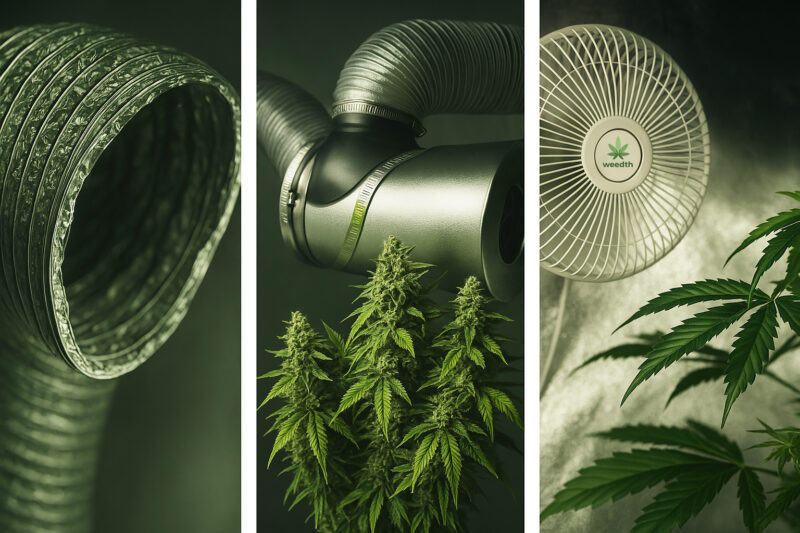
Good air circulation mimics the natural breezes found outdoors. Slight and consistent movement helps to strengthen the plants' stems and leaves. Stronger stems and branches can better support heavy buds without breaking.
Fans are integral to this setup, and oscillating fans distribute air evenly within the space. These fans mimic the natural movements of wind, prevent the formation of temperature differences, and encourage stronger plant development. Inline fans are also needed to pull stale air out and draw fresh air in. This helps to bring in fresh air for plants to use in making food(photosynthesis).
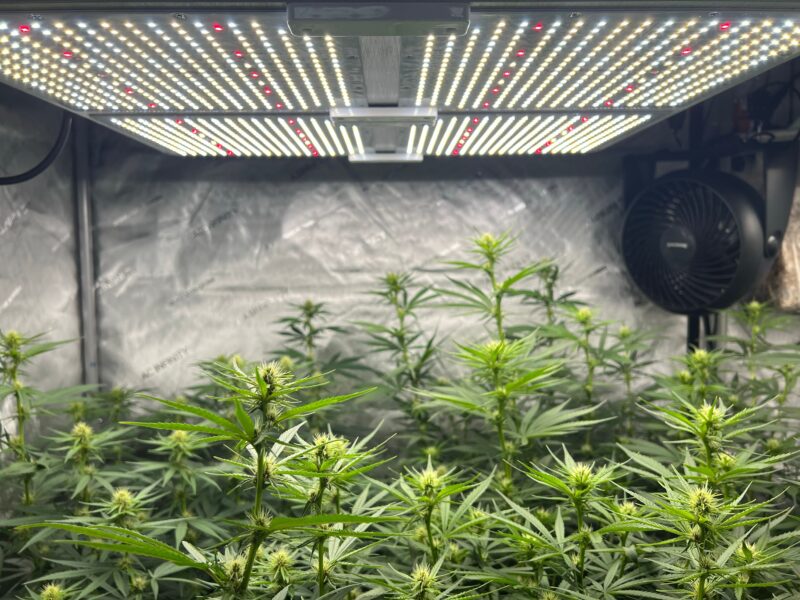
Exhaust systems typically include a powerful inline fan designed to expel used air and excess humidity from a room. Keeping the air circulation helps to control the temperature and reduces the risk of mold and pests from thriving in stagnant, moist conditions. Ducting helps these fans by efficiently directing airflow and making sure the entire room benefits from the circulation system.
Air conditioners and dehumidifiers may also be necessary in environments where climate control is difficult. These units help maintain the ideal temperature and humidity levels, which can otherwise vary significantly and negatively impact plant health.
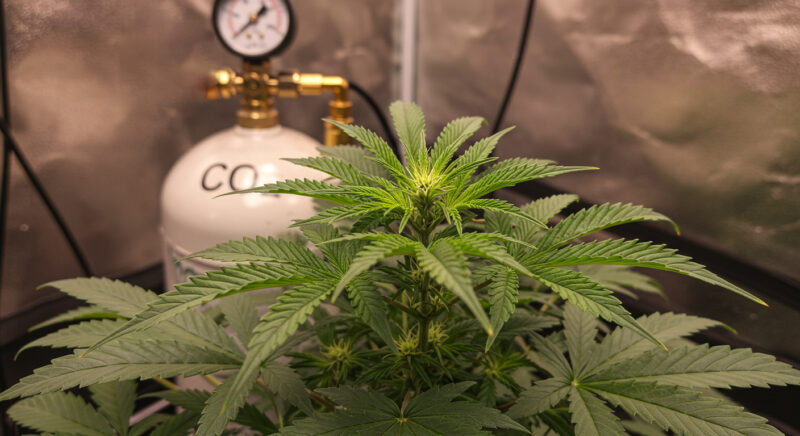
Advanced grow operations might include CO2 systems to stimulate plant growth and increase yield. These systems are managed carefully to maintain the correct concentration of CO2 and balance it with adequate ventilation.
Carbon filters are often incorporated into the exhaust system to control odors before the air is expelled outside. This feature is particularly important in cannabis cultivation because the plants can produce strong odors, especially during the flowering stage. Controlling these odors ensures compliance with local regulations and prevents attracting unwanted attention.
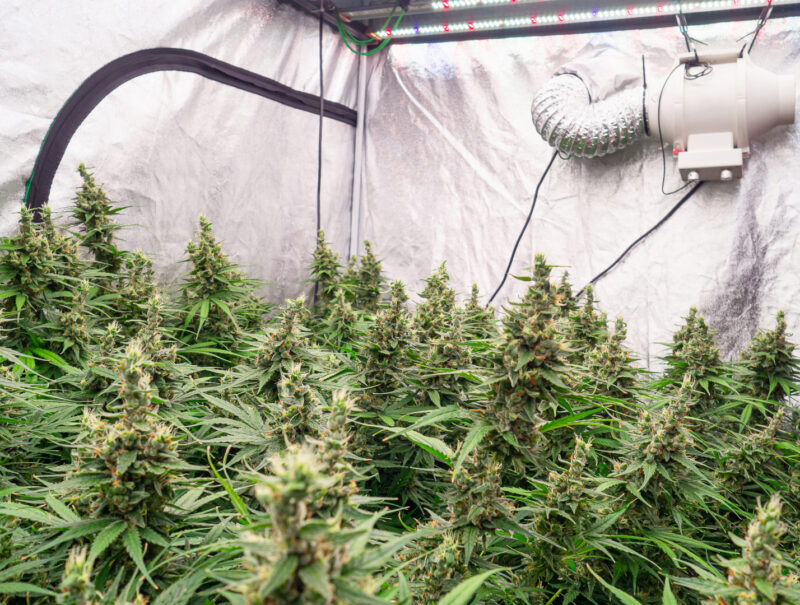
Cannabis plants are sensitive to their environments and stagnant air can lead to many problems. If there is no air circulation, the growing area can easily become a place where mold and pests flourish, especially in humid conditions. Also, these plants take in carbon dioxide and release oxygen while they grow. If the carbon dioxide runs out quickly, it can slow down their growth and hurt their ability to produce energy.
Components of Ventilation System
Inline Fans
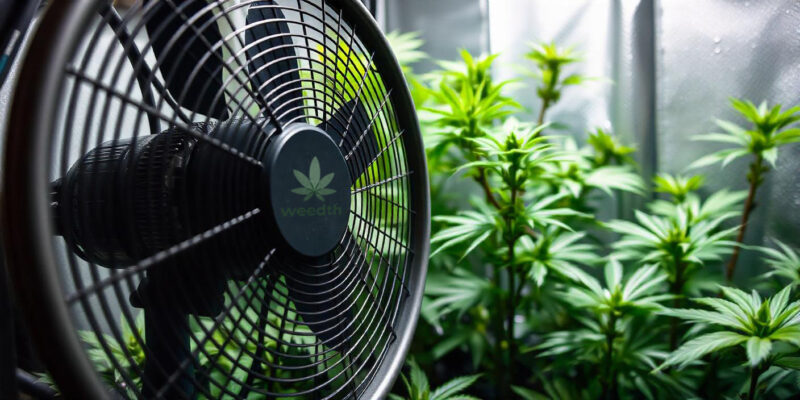
Inline fans move air through ducting systems, either bringing fresh air in or expelling stale air out. They are typically installed within the ducting network, positioned for efficient airflow throughout the grow space. These fans maintain a consistent air exchange, helping regulate temperature and humidity levels.
Oscillating Fans
Oscillating fans help to circulate air within the grow room, preventing the formation of hot or cold spots. They are usually placed at the canopy level to ensure even air distribution around the plants. This constant movement strengthens plant stems and promotes healthy growth by mimicking natural wind conditions.

Exhaust Fans
Exhaust fans remove stale, hot, and humid air from the grow room. They are typically installed near the top of the grow room where warm air accumulates. Removing this air helps prevent overheating and moisture buildup, thus maintaining a stable growth environment.
Intake Fans
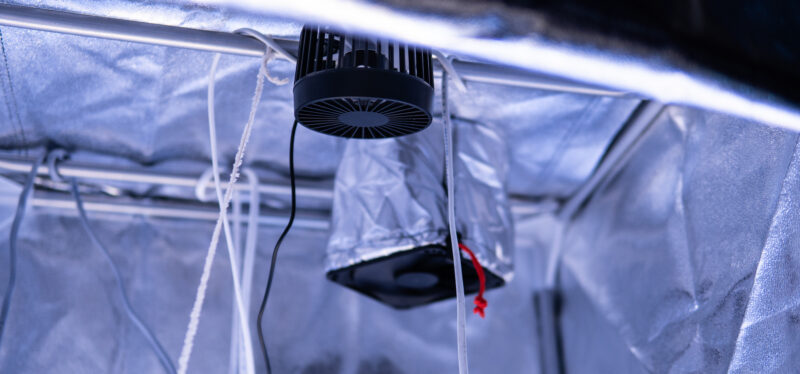
These fans draw fresh, cooler air from outside into the grow room, replacing the air expelled by exhaust fans. They are usually installed near the bottom of the grow space to pull in cooler air from outside. Proper placement ensures the plants' continuous supply of fresh air rich in carbon dioxide.
Ducting
Ducting facilitates the channeling of air in and out of the grow room, linking inline, exhaust, and intake fans to various ventilation outlets. It is typically routed through walls or ceilings to direct airflow efficiently. Sealed and insulated ducting increases efficiency, lowers your energy bills, and can often pay for itself in energy savings.

Carbon Filters
Carbon filters neutralize odors by filtering air before it is expelled outside. They are usually connected to exhaust fans or placed within the ducting system. Carbon filters trap odor molecules and purify the air.
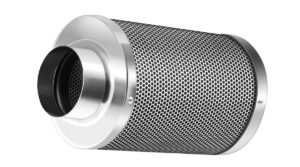
Ventilation Ports
Ventilation ports are openings in the grow room walls or ceiling designed to attach ducting and fans. They facilitate the movement of air in and out of the space and are crucial for efficient ventilation and air exchange.
Passive Intake Vents
Passive intake vents allow fresh air to enter the grow room without mechanical fans. They are usually positioned low on the walls to pull in cooler air from the outside. These vents work with exhaust fans to maintain a balanced airflow.
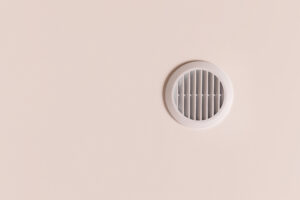
Fan Controllers
Fan controllers regulate the speed and operation of fans within the grow room. They can be placed anywhere that is easily accessible for monitoring and adjustments. These controllers help maintain optimal airflow and environmental conditions by automatically adjusting fan speeds based on temperature and humidity levels.
Duct Clamps
These clamps secure ducting to fans, filters, and ventilation ports, ensuring airtight connections that prevent air leaks and maintain efficient airflow.
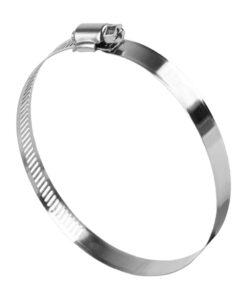
Duct Silencers
Duct silencers reduce noise generated by air moving through the ducting system. They are typically installed along the ducting path where noise is a concern. By dampening the sound, they create a quieter grow environment.
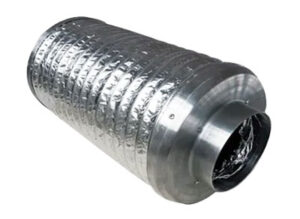
Air Circulators
Similar to oscillating fans, air circulators enhance air movement within the grow room, ensuring thorough air distribution and preventing stagnant air pockets that could hinder plant growth.
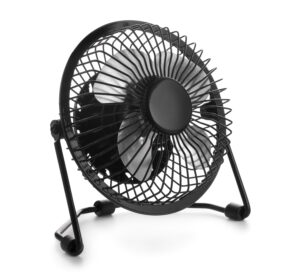
Backdraft Dampers
These dampers prevent air from flowing backward through the ventilation system, ensuring that air only moves in the desired direction, thus maintaining effective airflow.
Heaters and Air Conditioners (for Climate Control)
These devices regulate the temperature within the grow room. They are placed based on the grow room layout and ensure that the environment remains within the optimal temperature range for plant growth.
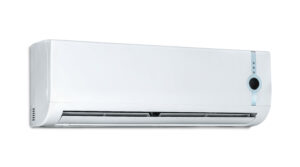
Humidity Controllers
Humidity controllers monitor and adjust the humidity levels in the grow room. They can be integrated with humidifiers and dehumidifiers to maintain ideal humidity conditions, which is crucial for preventing mold and promoting healthy plant development.
Temperature Controllers
These controllers manage heating and cooling equipment to maintain the desired temperature range. They are placed within easy reach for adjustments and ensure the grow room stays within the optimal temperature conditions.
Air Purifiers
Air purifiers remove contaminants and allergens from the air, improving overall air quality. They are placed in areas with good air circulation to maximize their air filtering effectiveness.
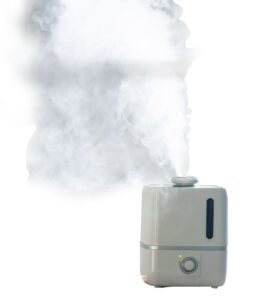
Filters (HEPA, Pre-Filters)
These filters capture dust, mold spores, and other particulates to protect plants and the ventilation system. They are installed in line with the air intake or within air purifiers and ensure clean air circulation.

Dehumidifiers
Dehumidifiers reduce excess humidity in the grow room, preventing mold and mildew. Positioned where humidity accumulates, they help maintain a dry and healthy environment for the plants.
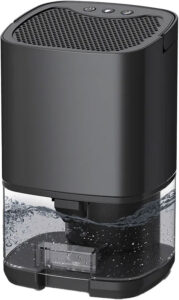
Humidifiers
Humidifiers are necessary in dry conditions to maintain optimal humidity levels. Placed in areas with good air circulation and they ensure even moisture distribution.
Air Diffusers
Air diffusers distribute air evenly throughout the grow room, enhancing the effectiveness of the ventilation system. They are placed at air entry points to ensure uniform airflow.
Fan Speed Controllers
Fan speed controllers adjust the operating speed of fans, helping to fine-tune airflow and ventilation. They are installed where fans are located, allowing for easy access and adjustments.
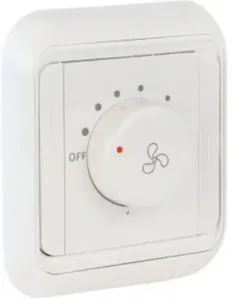
Cooling Tubes
Cooling tubes are used to cool high-intensity grow lights, preventing heat buildup. They are integrated with the lighting system and ducting to direct heat away from the grow space.
Filter Boxes
Filter boxes house carbon filters and are connected to the ventilation system. Positioned within the ducting, they help manage odors and purify the air before it is expelled outside.
Transition Pieces (Duct Connectors, Reducers)
Transition pieces connect different sections of ducting or adapt ducting to fit fans and filters. They are placed at junctions within the ducting system to ensure seamless airflow transitions.
Medium for Indoor Grow
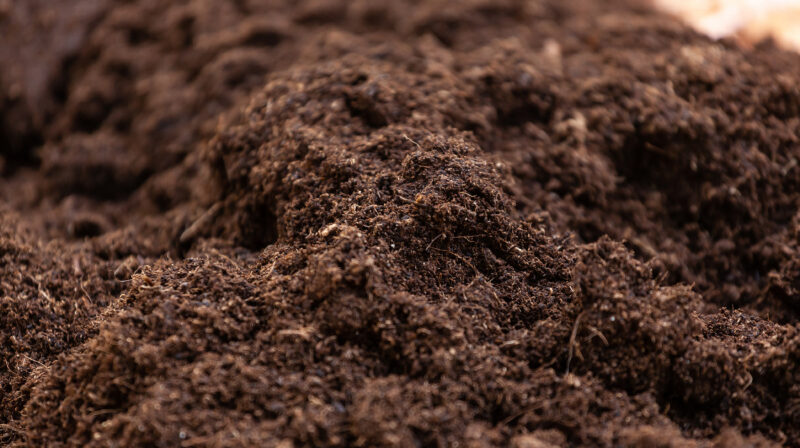
What is a Growing Medium?
Growing medium, also known as a growing media. A growing medium is the material in which plants' roots grow. It's the foundation that supports the entire plant life cycle. This essential component ensures roots have the right conditions to access nutrients and water. It supports healthy plant development by providing the necessary nutrients and water. Choosing a grow medium for indoors directly impacts the plants' health, growth rate, and overall yield. You must carefully select indoor growing mediums and create the best environment for plant growth.
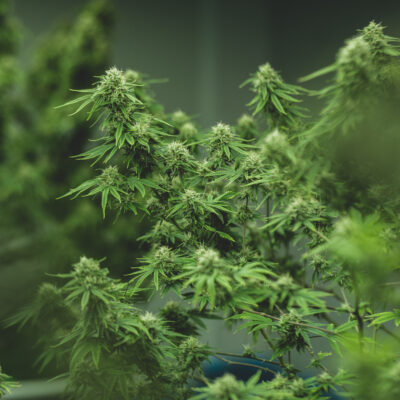
Importance of Selecting the Right Medium
The growing medium influences watering and nutrient management. Some mediums, like traditional soil is a more forgiving medium that naturally retains nutrients and moisture, releasing them slowly over time making them ideal for beginners or those who prefer a lower-maintenance approach to gardening. Others, like hydroponic systems, represent a more controlled approach to plant cultivation. In these systems, plants are grown without soil in a water-based and nutrient-rich solution that directly provides all essential elements for growth to their roots. This method offers the potential for higher yields but requires more expertise and attention.
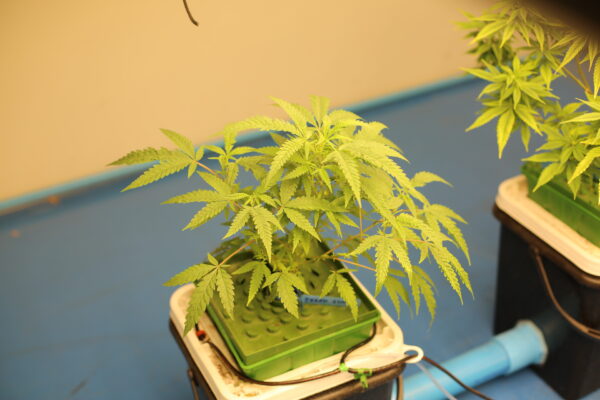
You are a beginner or an experienced grower, understanding the different medium's properties will help you make smart decisions that maximize yields and enhance smoke quality. Choosing the right medium isn’t just about what you put in the pot, it’s a big decision that shapes the health, growth, and ultimate yield of your plants from traditional soil to hydroponic systems, choosing the right growing medium for your plants isn't just about filling pots; this decision that affects the health, growth, and eventual yield of your indoor garden. Each type of medium—from traditional soil to more technical hydroponic systems—brings its own set of benefits and challenges.
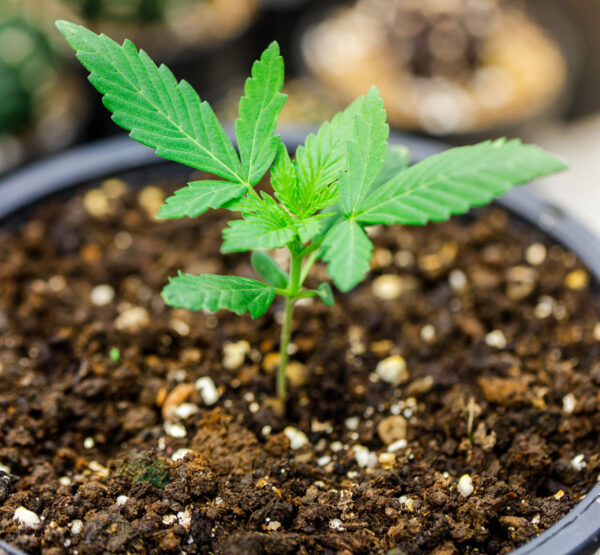
For beginners, traditional soil is often recommended. It’s pretty forgiving, allowing for some mistakes in watering and feeding. Soil holds onto nutrients and moisture and releases them gradually, making it much easier to manage. That’s why it’s a solid, low-maintenance choice if you’re just getting into growing!
What Makes an Ideal Growing Medium for Your Plants?
Cannabis adapts quickly to its needs throughout its lifecycle from germination to vegetative stage and flowering. Each stage requires specific water level, nutrients, and aeration, which the growing medium must provide for optimal growth.
At the germination and early seedling stages, the medium needs to stay consistently moist to encourage root development, but without getting waterlogged. As the plant moves into the vegetative stage, things really ramp up—growth speeds up, and so does the plant’s demand for nutrients. At this point, your medium should be able to hold and deliver nutrients effectively, so roots can easily access what they need to fuel this rapid growth.
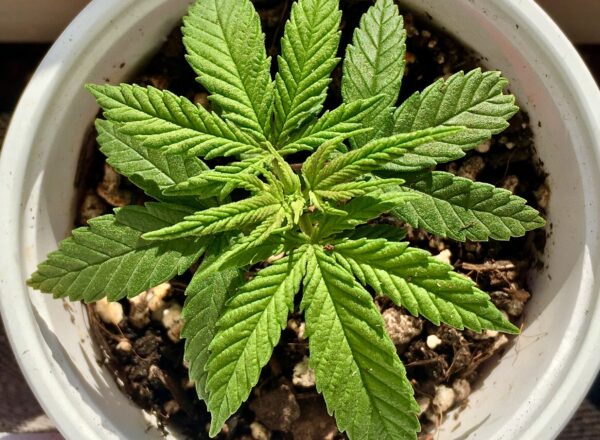
When a plant starts flowering, it needs more phosphorus and potassium. The medium's capacity to retain and slowly release nutrients is essential for robust bud development. Additionally, the medium's structural support becomes crucial as the plant's leaves and flowers significantly increase in weight.
Cannabis plants are pretty sensitive when it comes to pH levels and salt buildup. If the pH swings too much or salts start to accumulate, it can block nutrient absorption, which isn’t great for growth. So, an ideal growing medium should help keep pH levels steady and make it easy to flush out salts and waste. This keeps the roots healthy and efficient at taking in the nutrients the plant needs.

Furthermore, given the plant's sensitivity to its environment, the medium must help regulate the microenvironment around the roots. This includes maintaining an optimal temperature and protecting the root system from extreme conditions that could stress the plant and hamper its development.
Growing medium basics you need to know:
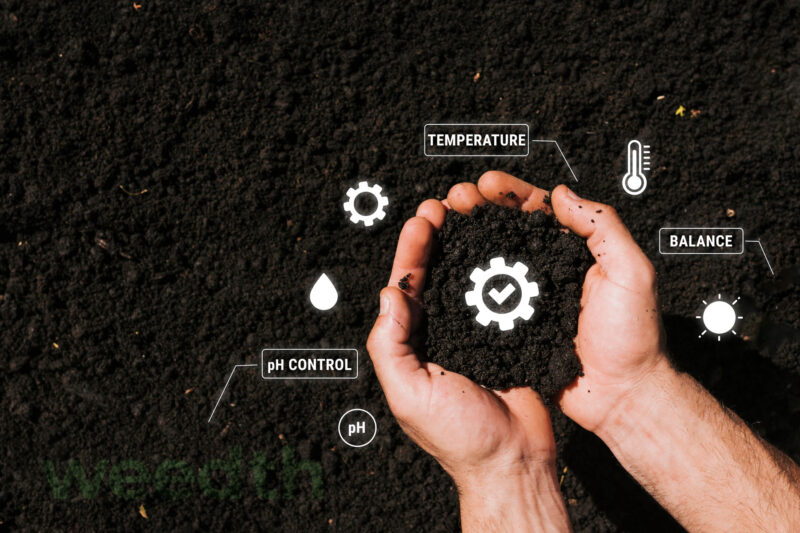
Proper Water Retention and Drainage
Cannabis plants thrive with just the right balance of moisture. Your growing medium should hold enough water to keep roots hydrated between watering but also let any extra drain away fast. This helps prevent waterlogging, which can lead to root rot and other fungal issues that harm the plant. Good drainage is key because it allows fresh air to reach the roots, supplying oxygen and stopping harmful pathogens from building up.
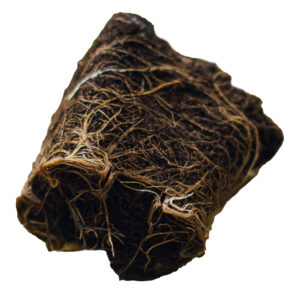
Overwatered roots
Overwatering can suffocate roots and lead to diseases, while underwatering can stress the plant and hinder growth. A medium that balances water retention and drainage helps maintain an optimal moisture level.
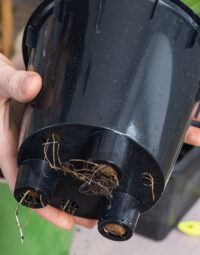
Make sure to use containers with drainage holes so excess water can out easily, and try not to let the medium get too dry between waterings. A moisture meter can be a handy tool to help you know exactly when it’s time to water. Adding a layer of mulch on top of your medium can also help hold in moisture and cut down on evaporation, keeping things balanced for your plants.
Aeration
Roots need oxygen to really thrive, so having a well-aerated growing medium is essential for a healthy root system. Cannabis roots do best when they can access plenty of oxygen, which they need for respiration—a process that helps them take in nutrients and grow. If the soil is too compact or dense, it can suffocate the roots, slowing down growth and cutting into your yield.
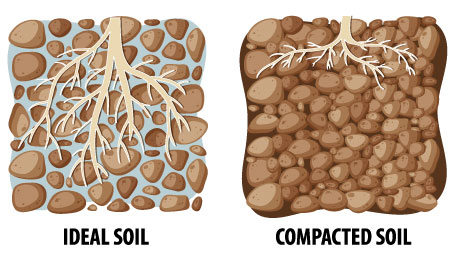
An ideal growing medium should keep its structure and allow airflow, even when it’s wet, so roots get a steady supply of oxygen. Without proper aeration, roots can get compacted, which restricts both growth and nutrient uptake. Good airflow in the medium supports a strong, healthy root system and that’s key for vigorous plant growth.

Incorporate perlite or other aerating materials into your medium to enhance airflow. Avoid overpacking the medium to maintain its structure. Consider using air-pruning pots such as smart pots or fabric pots, which encourage natural root pruning and improve aeration.
pH Stability
The pH level of your growing medium plays a big role in how well your cannabis plants can absorb nutrients. Cannabis generally does best in slightly acidic soil, with a pH range of around 6.0 to 7.0. The medium should either inherently maintain this pH range or be easily adjustable without frequent interventions. Stability in pH ensures that nutrients remain bioavailable, preventing deficiencies and promoting vigorous growth.

Incorrect pH levels can lock out essential nutrients, leading to deficiencies and poor plant health. A stable pH medium ensures consistent nutrient uptake.
Make it a habit to test the pH of both your growing medium and nutrient solution regularly. If needed, use pH adjusters to keep everything within that ideal range. Some growing mediums even come pre-buffered to a certain pH, which can make it a lot easier to manage.
Nutrient Availability
The ideal growing medium should be great at holding onto nutrients and making them easily available for your plants to use. It’s also important that the pH stays steady—big swings in pH can lead to nutrient lockout, where plants can’t absorb essential minerals. A good medium holds nutrients long enough for roots to take them in but also drains well, preventing any buildup that could cause issues.
Plants thrive when they get a balanced, steady supply of nutrients like nitrogen, phosphorus, and potassium. Good balanced medium keeps them well-fed, promoting strong, healthy growth while helping avoid issues like nutrient burn or deficiencies.
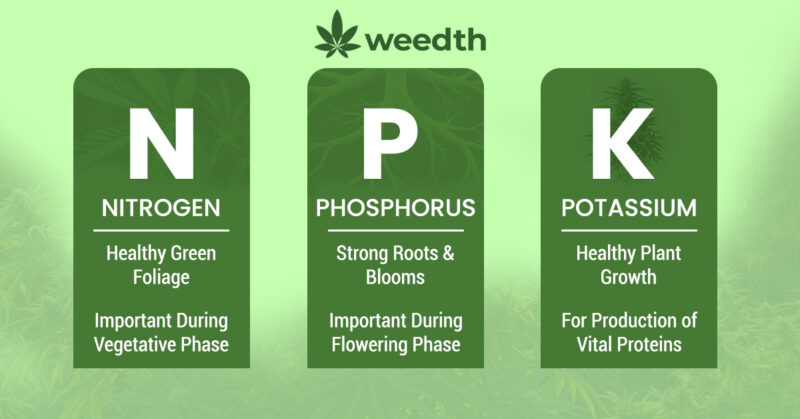
Make sure your growing medium has plenty of nutrients, but be careful not to go overboard! Too many nutrients can lead to nutrient burn, which shows up as browning on the leaf tips and can stress your plants. Excess nutrients can also throw off the pH balance, making it harder for plants to absorb what they need.
Keep an eye on the concentration of your nutrient solution—stick to recommended doses, and adjust based on how your plants are reacting. Regular monitoring of nutrient levels will help you fine-tune your feeding schedule. It also helps to choose a medium that works well with your nutrient solution, avoiding any imbalances. Slow-release fertilizers or organic amendments are also good options; they provide a steady nutrient supply without overwhelming your plants.
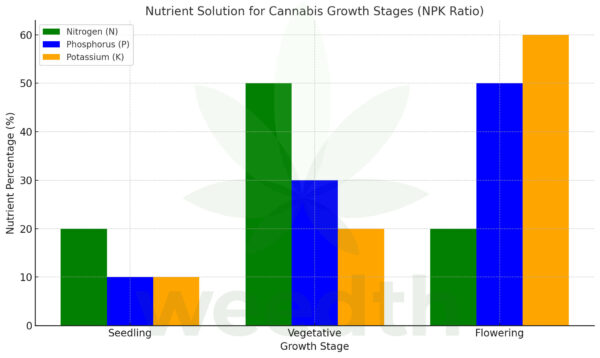
Adding beneficial microorganisms to your growing medium can really boost plant health. These helpful microbes form a symbiotic relationship with cannabis roots, enhancing nutrient uptake, strengthening disease resistance, and supporting overall growth. Incorporate compost teas, mycorrhizae or other microbial inoculants into your medium.
Note: Avoid using chemicals that can harm beneficial microorganisms.
Structural Stability
Cannabis plants can get big and heavy, especially when they’re in the flowering stage. A good growing medium should be sturdy enough to keep your plants good rooted. It also needs to hold its structure throughout the entire growth cycle to avoid issues like root exposure or medium breakdown, which could mess with water and nutrient uptake.
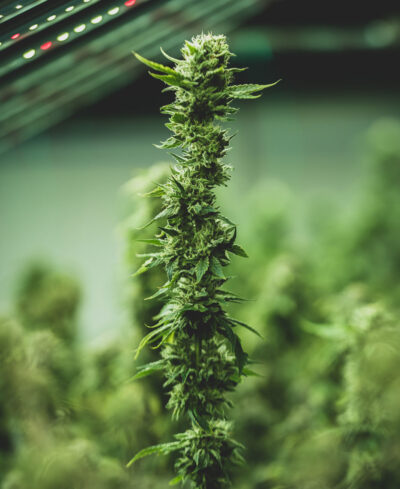
Pest and Disease Resistance
Your growing medium should be free of pests and pathogens that could harm your plants. Using sterilized or treated mediums helps cut down on the risk of introducing harmful insects, fungi, or bacteria into your grow space. Starting with a clean, pest-free medium creates a healthier environment from the get-go, reducing the chances of infestations and disease problems down the line.

Pests and diseases can quickly spread and devastate your crop. A clean medium helps prevent these issues from taking root in your grow space.
Always start with sterilized or treated mediums. Keep your grow area clean and monitor for any signs of pests or diseases regularly.
Compatibility with Growing Techniques
Different growing techniques such as soil, coco, organic or hydroponics require specific types of growing mediums. The ideal medium should be compatible with your chosen growing method and equipment.
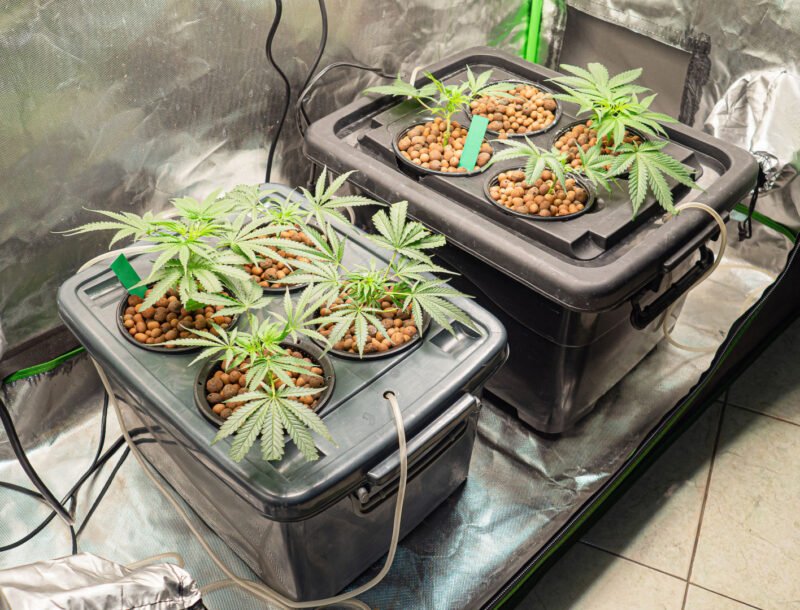
Research the requirements of your growing technique and select a medium designed to meet those needs. For instance, hydroponic systems need soilless mediums that support nutrient solutions effectively.
Longevity and Reusability
Some growing mediums can be reused for several grow cycles, while others are meant for single use only. A good reusable medium can save you both time and money, plus it’s more environmentally friendly since you’re cutting down on waste.
If you’re reusing a medium, just make sure to clean and sterilize it between cycles to keep things healthy. Look for mediums that are known for their durability and resilience, so they can hold up well over multiple uses.

Growing mediums can accumulate pathogens, salts, and other residues over time. An ideal medium should be easy to sterilize or replace to maintain a clean growing environment. Regular sterilization prevents the buildup of harmful organisms and salts that can affect plant health. Use sterilization methods such as baking and boiling for reusable mediums. Consider the ease of replacement for single-use mediums.
Environmental Friendliness
Sustainability becomes more important; it’s also worth considering the environmental impact of your growing medium. The ideal medium should be reusable or biodegradable and sourced in a way that keeps its ecological footprint low. Choosing eco-friendly options supports healthy plant growth and positively impacts the environment—benefiting you, other growers, and the ecosystem as a whole.
Ease of Management
Choosing a medium that’s easy to work with can make the whole process smoother and more enjoyable. The right medium should let you easily monitor and adjust water, nutrients, and pH to keep your plants thriving. Plus, it should be versatile enough to fit different growing styles and setups, whether you’re using containers, grow bags, or even hydroponic systems. This flexibility lets you adapt to whatever approach works best for your grow.
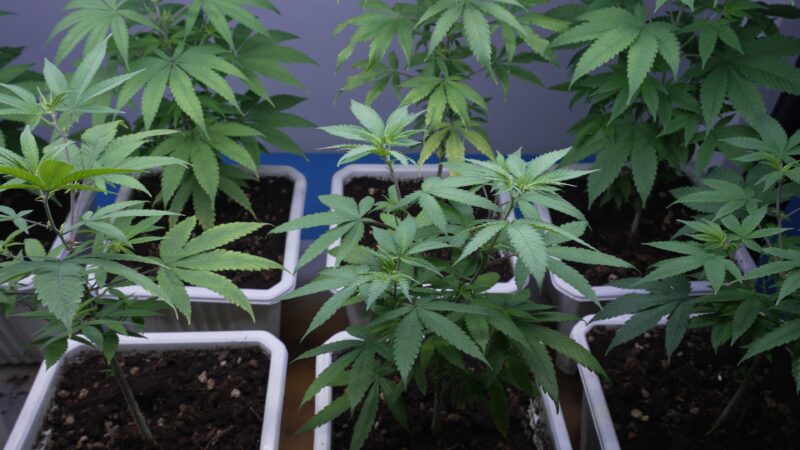
Choose a medium that suits your growing style and experience level. Pre-mixed mediums can save time and ensure consistent results. Experiment with different mediums to find the one that best fits your needs and preferences. A user-friendly medium simplifies the growing process, making it easier to manage your plants' needs and reduce the risk of mistakes.
Consistency and Quality Control
A reliable medium should have consistent texture, nutrient content, and pH levels to ensure uniform growth conditions. Inconsistent mediums can lead to uneven growth and unpredictable results that making it harder to manage your plants effectively.

Choose reputable brands with stringent quality control measures. Look for reviews and recommendations from other growers to gauge a medium's reliability.
Cost-Effectiveness
The cost of your growing medium can significantly impact your overall cultivation budget. An ideal medium should offer good value for money, providing the necessary properties without being prohibitively expensive.
Balancing cost with quality ensures that you can maintain a sustainable grow operation without compromising plant health. Compare prices and evaluate the long-term benefits of different mediums. Bulk purchases or reusable mediums can reduce costs over time.
Thermal Insulation
The medium should help regulate root temperature, protecting against extreme temperature fluctuations. An ideal medium provides some level of thermal insulation to maintain a stable root environment.
Roots are sensitive to temperature changes, which can affect growth and nutrient uptake. A stable temperature promotes healthy root development. Use insulating containers or add insulating layers around the pots. Monitor and adjust the growing environment to maintain consistent temperatures.
Cation Exchange Capacity (CEC)
CEC or cation exchange capacity, refers to a medium’s ability to hold and exchange positively charged ions (cations) like calcium, magnesium, and potassium. A medium with high CEC can store more nutrients and gradually release them to your plants when they need them, supporting steady, healthy growth.
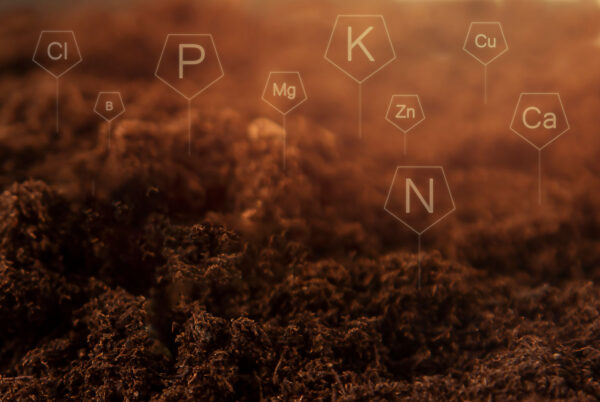
A higher CEC means the medium can retain essential nutrients longer, providing a steady supply to the plants. Select mediums with naturally high CEC, such as certain types of soil or amendments like vermiculite and clay. Just remember to replenish nutrients periodically to keep levels balanced for optimal growth.
Common Types of Indoor Growing Medium
If you are new to indoor gardening, the wide range of growing mediums can feel a bit overwhelming but each type has specific benefits designed to optimize plant health and growth. Each type you choose from traditional soil mixes to innovative hydroponic systems and soil-less options like coco coir or aeroponics, knowing what each medium offers will help you make the best choices for your plants' needs.
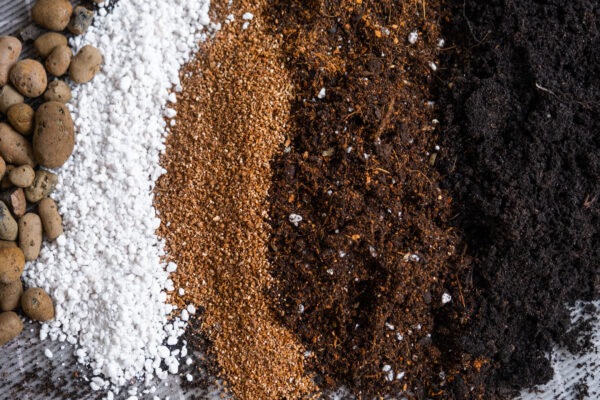
Some mediums are more forgiving and better suited for beginners, offering a buffer against over or under-watering and fluctuations in nutrient levels. Others allow for greater control over the growing environment, leading to faster growth and greater yields but may require more precise management.
This guide will help you understand each medium's benefits and how they can suit your gardening style and goals. The more you know, the better you can choose the right medium for your plants. It should match your gardening experience.
Let's explore these options to set you on the path to successful indoor gardening:
Soil
Soil-based mediums are the classic choice for cannabis growers, and for good reason due to their natural composition and forgiving nature. They’re natural and pretty forgiving, which helps plants thrive with the right mix of nutrients, water, and air. Indoor soil mixes designed specifically for cannabis usually come loaded with nutrients to support the plants through different growth stages, making sure there's a good balance of drainage and water retention. They are often enriched with organic materials like bat guano, worm castings, or compost, which slowly release nutrients as they decompose. This gradual nutrient release is beneficial for cannabis, which requires consistent nutrient availability to support its growth cycles. Depending on the amendments added—such as peat, compost, perlite, and vermiculite—soils can range from light and fluffy to rich and densely packed.
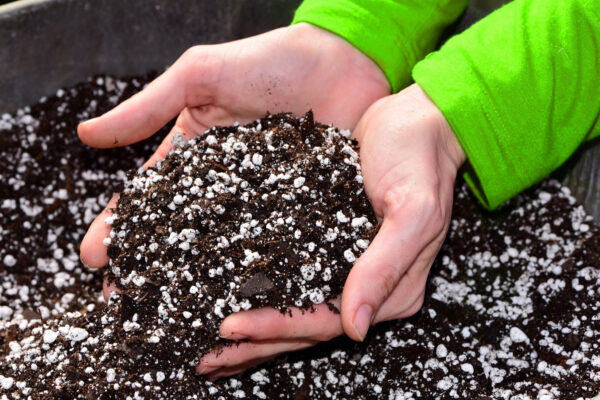
For instance, a standard cannabis soil mix might include sphagnum peat moss for moisture retention, perlite for better drainage, and worm castings for long-lasting nutrients. Soil is also valued for its buffering ability, meaning it helps prevent sudden pH and nutrient shifts. This is a big plus for beginners, as it makes minor mistakes in watering or feeding less risky. This buffering power comes from soil’s cation-exchange capacity (CEC), which lets it hold onto nutrient ions and release them slowly, matching the plant's needs. This gradual nutrient release keeps soil chemistry stable, reducing the risk of nutrient lockout—when plants can’t absorb nutrients properly, leading to deficiencies.
Despite its advantages, soil does require careful monitoring and maintenance. Overwatering is a frequent challenge for soil-based growers since soil naturally holds moisture for longer durations.If the root environment isn't managed properly, it can become too saturated with water. This excess moisture can create a perfect breeding ground for root rot, a fungal disease that can seriously harm or even kill plants by breaking down their root system. It's important to keep an eye on moisture levels to help our plants stay healthy and thriving!
Here are some effective ways to reduce risks and create a healthy root environment:
Improve Soil Drainage: Adjust your soil mix to improve drainage and prevent water from pooling around the roots. Adding amendments like perlite, vermiculite, or coarse sand can boost soil porosity, letting excess water drain more freely and creating a healthier root environment.

Monitor Your Watering Schedule: Establish a consistent watering routine that meets your plants' needs. A simple way to check if it’s time to water is the "finger test" Stick your finger into the soil up to your second knuckle—if it feels dry at your fingertip, it’s time to water; if it’s still damp, give it another day or two. This helps avoid overwatering and keeps roots happy and healthy!
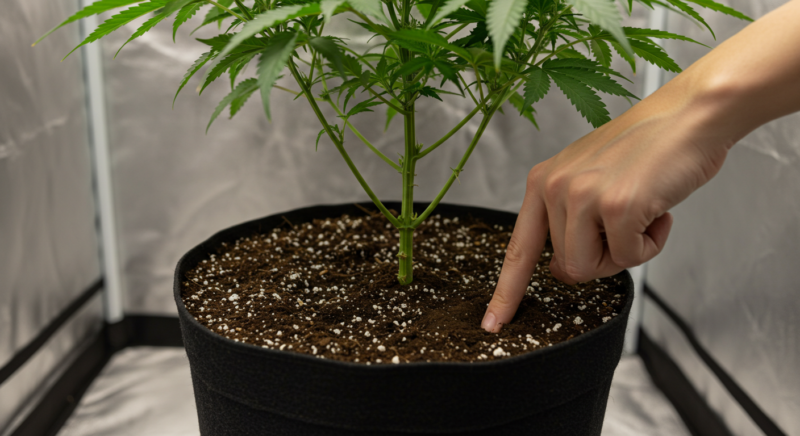
Use Proper Containers: Make sure your containers have good drainage holes at the bottom. Containers without proper drainage can trap moisture and worsen overwatering issues. For better results, consider using smart pots or fabric pots—these are fantastic for cannabis growing! Their breathable fabric allows for excellent drainage, preventing water from pooling, and boosts air circulation around the roots, which reduces the risk of fungal diseases.
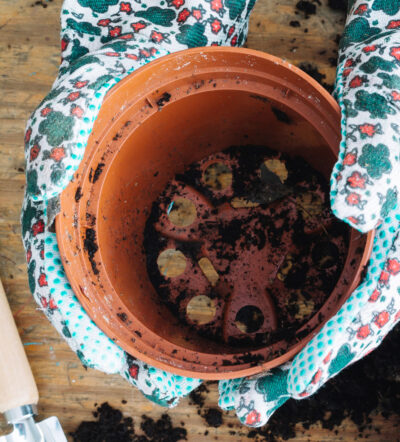
The fabric also promotes “air pruning,” which encourages a denser, fibrous root system. This results in healthier plants and potentially higher yields. Available in a range of sizes, smart pots are super versatile and adapt well as your plants grow, making them a solid choice for indoor growers at any stage.
Humidity Control: Keeping humidity in check is important for healthy soil moisture indoors. High humidity can make soil too damp, so using a dehumidifier or improving ventilation can help. Aim for a humidity range of 40-60%, which helps balance moisture levels, supports healthy roots, and lowers the risk of fungal problems.
Implement Mulching: Applying a layer of mulch over the soil helps regulate moisture levels. Organic mulches like straw or bark absorb excess water and reduce evaporation, providing a stable moisture environment for the roots. This additional layer also moderates soil temperature and suppresses weed growth, creating a more consistent and supportive setting for cannabis plants.
Regular Health Checks: Check on your plants and soil frequently for signs of stress or disease. Early symptoms like yellowing leaves, stunted growth, or a moldy smell could mean root rot. Catching these signs early can make a big difference in your plants' recovery.
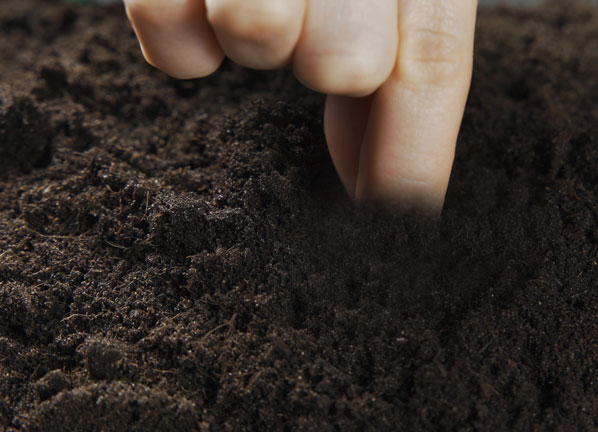
Foster Beneficial Microbes:Adding compost or compost tea to your soil introduces beneficial microbes that compete with harmful pathogens and strengthen the soil ecosystem. These microbes break down organic matter, improve soil structure, and help protect roots from diseases.
Consider Living Soil for Advanced Growing: Experienced growers often opt for “living soil,” a self-sustaining ecosystem that mirrors nature’s richness. Living soil is a blend of organic materials like compost, peat moss, and manure, which slowly release nutrients over time. Beneficial organisms—including bacteria, fungi, and even earthworms—help break down these materials, supporting a balanced soil structure that “breathes” and retains water, which is ideal for root health.
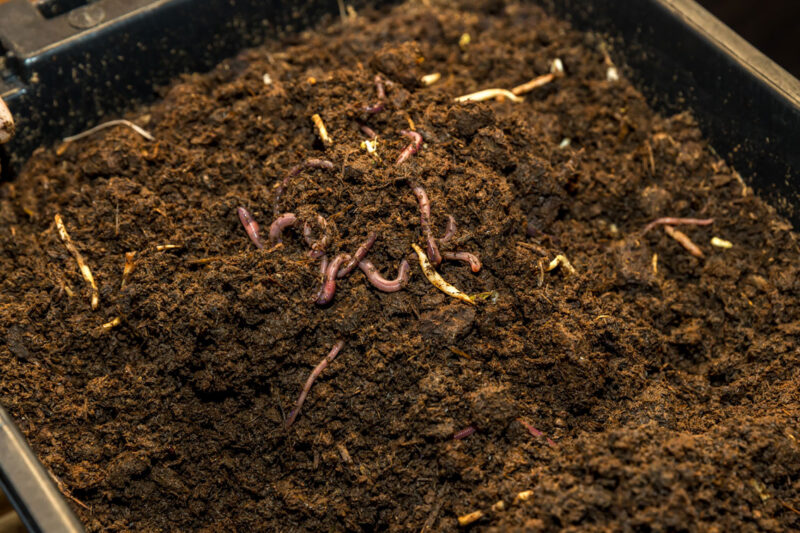
Organic vs. Non-organic Soil Mixes
Organic and non-organic soil mixes each offer unique benefits for cannabis growers, depending on their goals and growing style. Organic soils are made from natural ingredients like compost, manure, and decomposed plant material, creating a nutrient-rich environment that supports a thriving microbial community. These beneficial microbes play a key role in nutrient uptake and overall plant health. On the other hand, non-organic soils often include synthetic fertilizers and amendments for a controlled release of nutrients, giving growers more predictable, immediate results.
While organic soils may vary in nutrient composition and require a bit more attention to balance, they’re a great choice for those focused on sustainability and long-term soil health. Non-organic soils, with their consistency and ease of nutrient management, might be better suited for growers looking for quicker, more uniform growth.
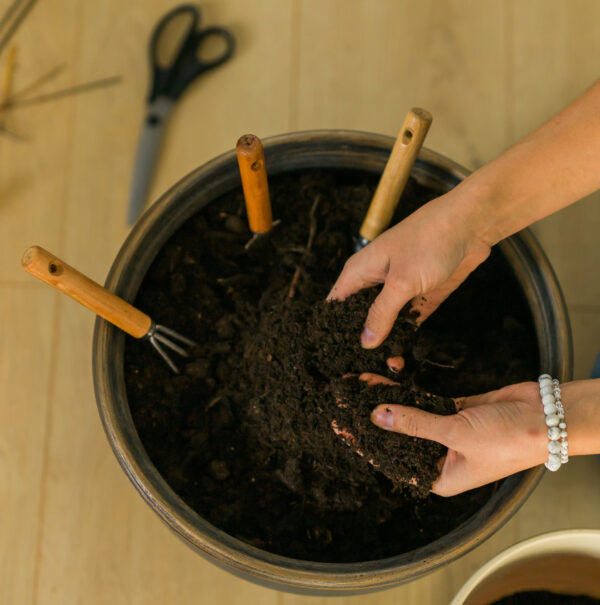
The choice between organic and non-organic largely comes down to what you’re aiming for in your grow. Organic soil is ideal if you want a sustainable, gradual approach that improves the soil over time. If you’re looking for faster results with more control, non-organic might be the way to go. Both have their place in cannabis cultivation, and understanding their strengths can help you make the best choice for your setup and values.
All things considered, it’s no wonder soil remains a popular choice for cannabis growers, especially beginners. It’s a forgiving, versatile medium that supports plants from seedling to flowering. Just keep in mind that, to get the most out of soil, you’ll still need to manage it carefully. Regularly check that it’s well-aerated, moist (but not too wet), and nutritionally balanced to keep your plants happy and productive.
Hydroponics
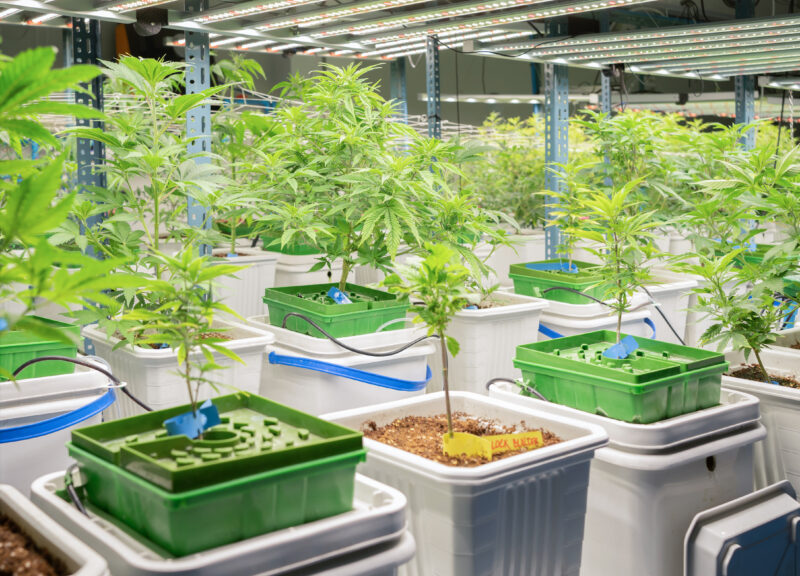
Hydroponics is a soil-less growing method where plants thrive in a nutrient-rich water solution. Many experienced cannabis growers favor this system for its efficiency and high level of control. In hydroponics, nutrients are delivered directly to the roots in a very soluble form, allowing for faster uptake and often quicker growth than soil-based setups.
One of the main perks of hydroponics is the ability to precisely control the plant’s growing conditions. Growers can fine-tune nutrient formulas, pH levels, and hydration schedules to match their plants’ specific needs. This precise management supports faster growth and often leads to higher yields. With hydroponics, you can adjust the nutrient solution to give plants exactly the right balance of essential nutrients like nitrogen, phosphorus, and potassium, along with other micronutrients. This level of customization is especially useful during different growth phases, like the vegetative and flowering stages, when nutrient needs vary a lot.
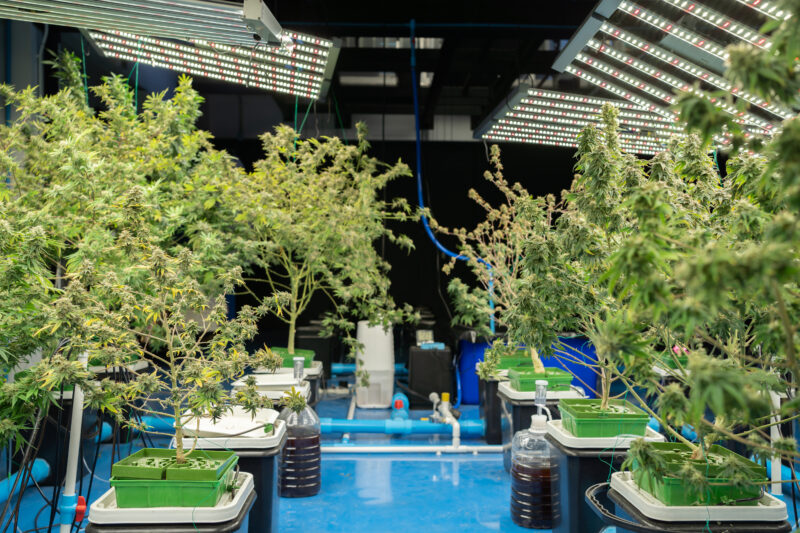
Hydroponics does require close monitoring and regular maintenance, though. Keeping the right pH and nutrient balance is crucial because any imbalances can quickly impact plant health. If the pH is too high or too low, plants may struggle to absorb nutrients, leading to deficiencies and slower growth. Regular checks and adjustments are key to maintaining a healthy environment, which can make hydroponics a bit more challenging and less forgiving than soil-based growing—especially for beginners. While hydroponics offers great control, it may be best suited for growers who are ready to stay on top of the system’s demands.
Hydroponics does require careful monitoring and maintenance. Maintaining the right pH and nutrient balance is important because any imbalances can quickly affect plant health. A pH level that is too high or low can prevent plants from absorbing nutrients efficiently, leading to deficiencies and stunted growth. Regular checks and adjustments are necessary to ensure the environment remains conducive to growth. This makes hydroponics more challenging than soil gardening and may be less forgiving for beginners. Hydroponic systems provide precise control but can be hard for new growers.
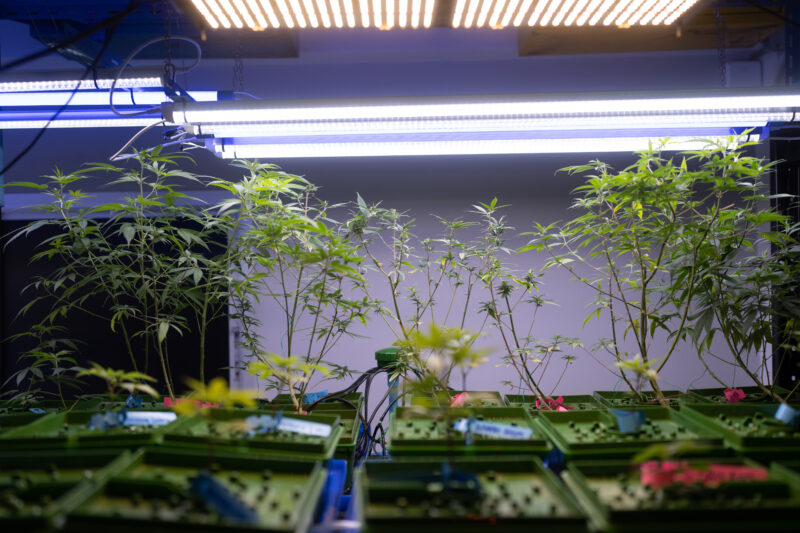
Several types of hydroponic setups exist including deep water culture (DWC), ebb and flow, and nutrient film technique (NFT) are popular choices and each provides different benefits such as increased oxygenation to roots or precise control over feeding schedules. In DWC systems, plants are held above buckets filled with nutrient solutions. Their roots dangle directly in the solution while an air pump adds oxygen, promoting rapid growth and high yields. Ebb and flow systems work by flooding the growing area with nutrient solution at specific intervals, which then drains back, pulling in fresh oxygen for the roots. NFT systems use a continuous flow of nutrient solution over the roots, which are housed in channels ensuring that they receive constant nutrition and oxygen.
For lighting, hydroponic cannabis cultivation typically requires high-intensity light sources that mimic the spectrum of natural sunlight. LED lights are commonly used because they provide a full spectrum of light, are energy-efficient, and produce less heat than other grow lights like HID or fluorescent bulbs. These lights support various growth stages of cannabis by adjusting wavelengths to match the plant's needs, promoting healthy growth and maximizing yield.
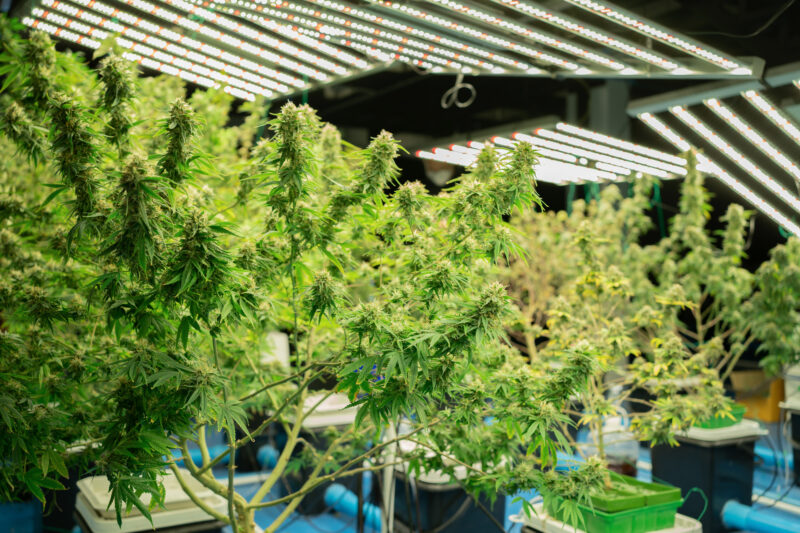
Suppose you are willing to invest the time and resources; in that case, hydroponics is a big rewarding way to grow cannabis, and you can produce high yields that are hard to achieve with soil. If you're ready to dedicate time and resources, hydroponics can transform your cannabis cultivation experience. This method requires an initial investment in equipment and learning but long term benefits are substantial. Over time, the efficiency of hydroponics often leads to higher yields and better quality cannabis than traditional soil methods can offer. Additionally, once the system is set up automation can significantly simplify the daily maintenance and monitoring tasks, allowing for more consistent results with less manual effort. This combination of upfront investment and enduring advantage makes hydroponics a compelling choice for serious growers looking to optimize their operations.
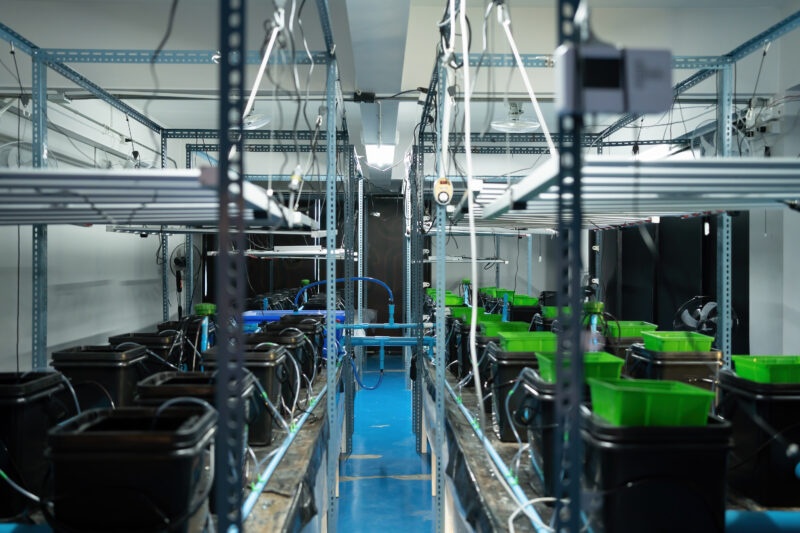
Advanced hydroponic setups can automate many routine tasks involved in monitoring and adjusting the growing conditions. For example, automated pH adjusters can add buffers to the nutrient solution to maintain optimal acidity, and nutrient dosers can inject the right amounts of nutrients into the system based on preset schedules. These automation features reduce workload and help prevent human mistakes, making it easier to maintain the ideal growing environment.
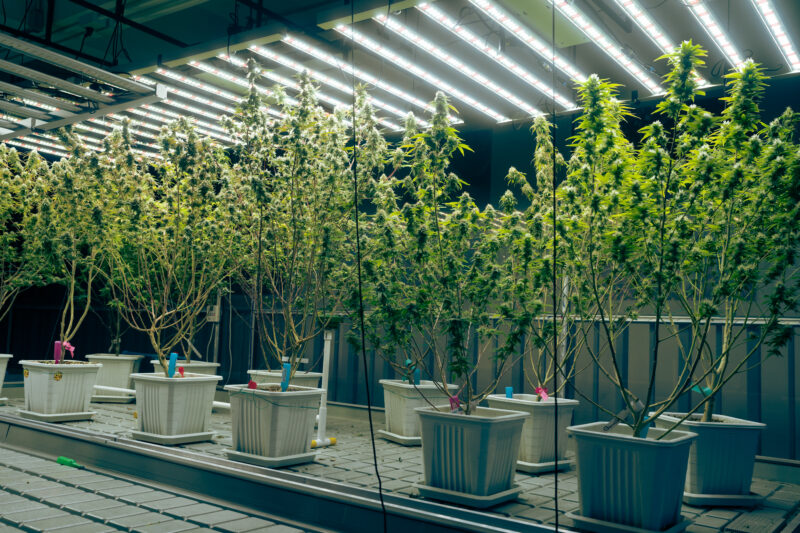
Hydroponics is environmentally friendly in many ways. It generally uses less water than soil-based systems because the water in hydroponic setups is recirculated and reused which minimizes waste. Furthermore, because it is a closed system, the use of pesticides and herbicides can be significantly reduced. Common soil-borne pests and diseases are less prevalent leading to cleaner and more sustainable cultivation practices.
Hydroponics is a highly efficient and controlled way to grow cannabis. This method produces better plant growth and bud quality than soil methods. It allows growers to achieve higher yields and better quality while using fewer resources and being more environmentally friendly. Whether you're an experienced grower looking to improve your setup or a beginner excited to try something new, hydroponics is a satisfying way to grow cannabis.
Coco Coir
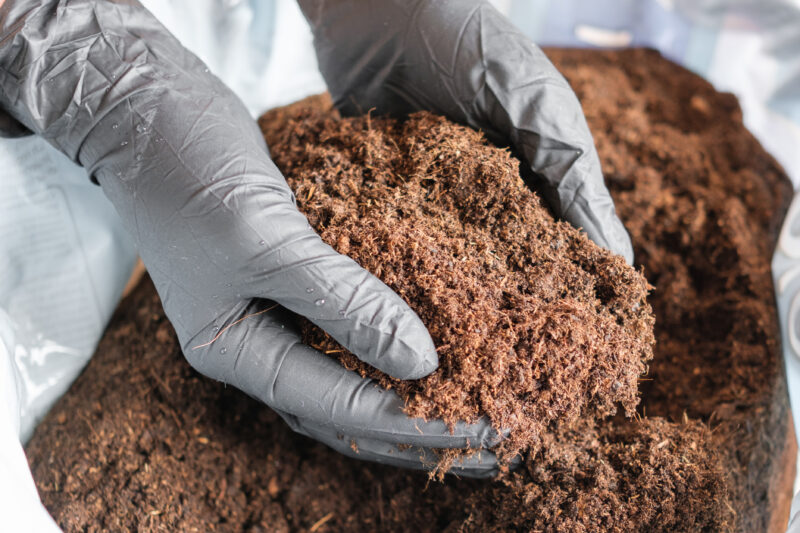
Coco coir, made from coconut husks, is a renewable, popular choice among cannabis growers. It offers excellent aeration and water retention, making it ideal for promoting strong root growth and efficient nutrient uptake. Similar to soil, coco coir can hold water and nutrients near the roots, but it also drains well, reducing the risk of waterlogging and root rot.
One of the big benefits of coco coir is the constant airflow it provides, keeping roots well-oxygenated—a key factor for healthy plant growth. This aeration encourages roots to grow densely and freely, which maximizes their ability to absorb nutrients and water. Plus, coco coir’s water retention helps keep plants hydrated with less frequent watering, which is handy in places where water conservation is important.
When mixed into soil, coco coir improves the texture and overall quality of the soil, boosting both its water retention and aeration. This can be a big help for cannabis growers who prefer soil but want to tackle issues like poor drainage and compaction, which can limit root growth and nutrient uptake.
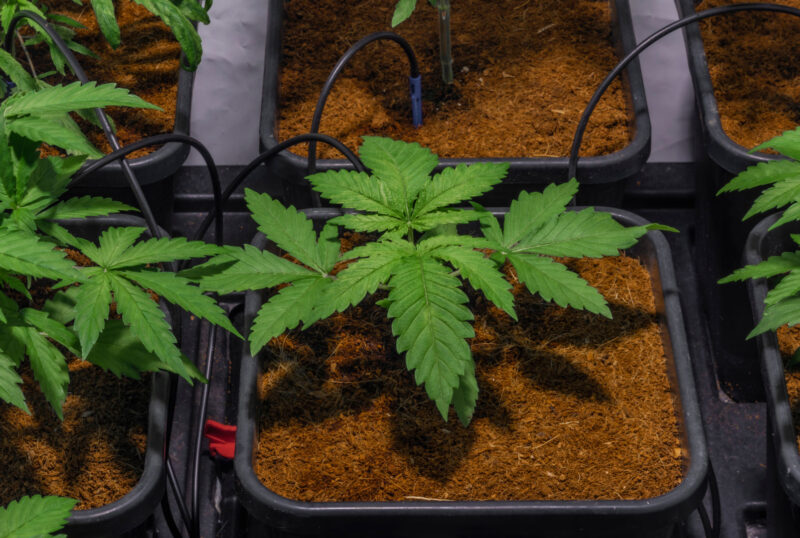
Coco coir helps to loosen dense soil, breaking up clumps and allowing better air and water movement through the medium. This ensures that roots can grow freely and expand without restriction, which is vital for healthy cannabis development. Improved structure helps to maintain a more consistent moisture level throughout the soil, reducing the risk of waterlogging and associated root diseases.
One benefit of coco coir is its neutrality, meaning it doesn't inherently contain nutrients. This neutrality gives growers full control over nutrient management and lets them optimize it according to the specific needs of the cannabis plant at different stages. This level of control provides benefits for optimizing plant health and maximizing yield. However, this also means that coco coir requires careful nutrient management to ensure plants have a balanced diet. Coco coir has a natural tendency to bind with certain cations like calcium and magnesium. This means that when these essential nutrients are present in the nutrient solution, the coco coir fibers can absorb and hold onto them instead of letting them remain freely available in the soil solution where plant roots can absorb them. As a result, even though you may be adding adequate amounts of calcium and magnesium to your feeding regimen, the plants might not be receiving them in sufficient quantities. This binding effect occurs due to the natural composition of coco coir, which contains negatively charged sites that attract and hold positively charged nutrient ions (cations).
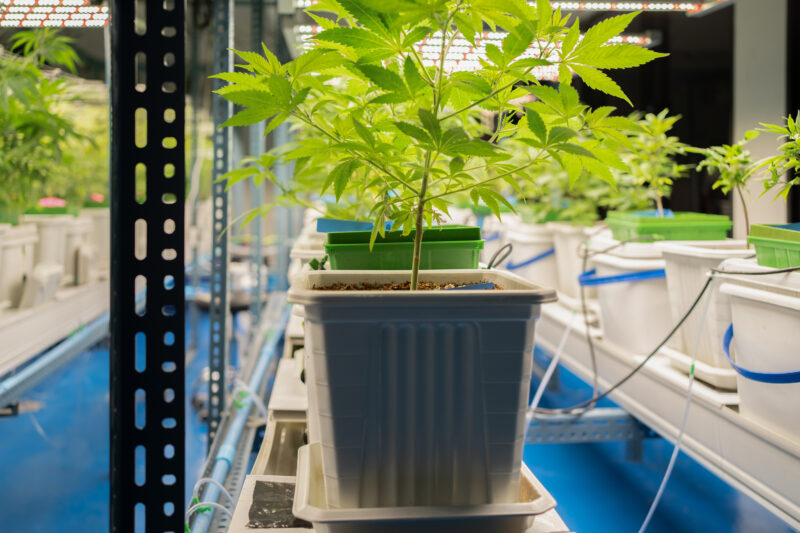
This characteristic of coco coir requires careful management of nutrient solutions especially for calcium and magnesium which are critical for plant health and development. Growers often add a supplement known as Cal-Mag to their nutrient mix to counteract this binding and ensure that plants receive enough of these nutrients. This supplement provides extra calcium and magnesium to make up for the calcium and magnesium bound by coco coir. Understanding this interaction and adjusting nutrient management practices accordingly allows growers to ensure that their plants remain healthy and vibrant. This method really helps solve one of the main problems with using coco coir as a growing material.
Coco coir is highly adaptable and effectively used in hydroponic setups like ebb and flow systems, combining the benefits of organic media with the precision of hydroponics to enhance plant growth and yield.
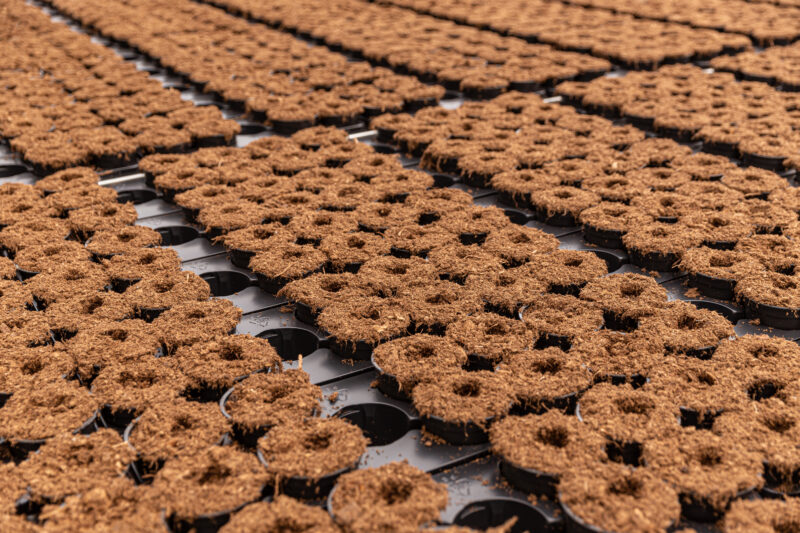
In ebb and flow systems, coco coir's ability to absorb and retain the nutrient solution during the flooding phase ensures that plants receive optimal nutrition. Its excellent drainage characteristics prevent waterlogging during the drain phases, maintaining the necessary oxygen levels around the roots. This balance of moisture and aeration is crucial for preventing root diseases and promoting healthy root development.
Organic coco coir enhances the flavor and aroma of buds, making it appealing for quality-focused growers. Furthermore, its buffering capacity is beneficial for pH stability which helps prevent nutrient lockout—a common issue in hydroponics that can disrupt plant nutrition.
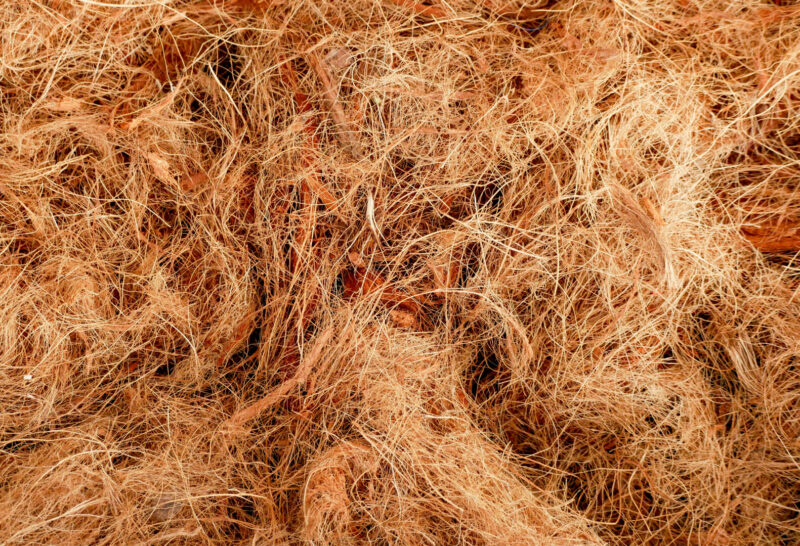
Coco coir has become a common and highly preferred growing medium for indoor cannabis cultivation due to its excellent water retention, aeration, and sustainability. Its neutral pH level, resistance to pests and diseases, and ease of handling make it an attractive option for novice and experienced growers. If you understand how to prepare and use coco coir effectively, you can create an optimal growing environment that supports healthy plant growth and maximizes yield. No matter if you're growing in pots, containers, or hydroponic systems, coco coir provides the versatility and benefits needed to achieve successful indoor cannabis cultivation.
Aeroponics
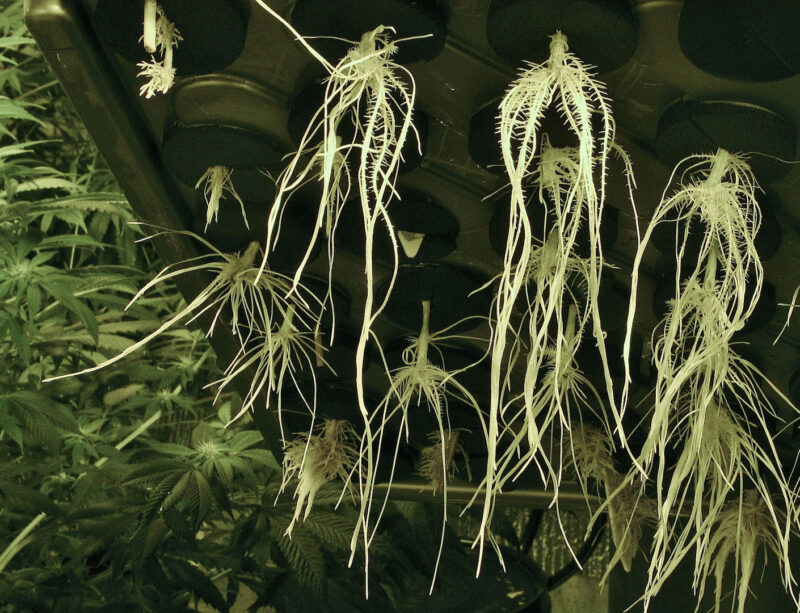
Aeroponics is an advanced form of hydroponics where plant roots are suspended in the air and periodically misted with spray of nutrient solution, typically for a few seconds every few minutes. This method maximizes oxygen exposure to the roots, promoting rapid growth and high yields.Aeroponics systems are highly efficient in water and nutrient usage, making them a sustainable choice for indoor cultivation.
The aeroponic system carefully controls the environment with sensors and timers. This ensures that the roots receive the right amount of moisture without becoming waterlogged. It's important to maintain this balance because the roots are exposed and can dry out quickly if the misting cycles fail or are scheduled improperly.
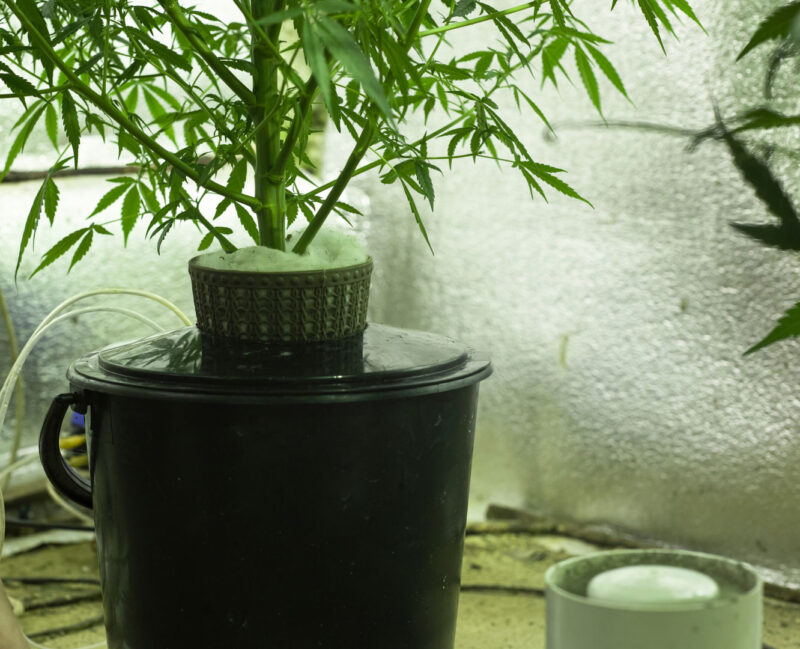
Setting up an aeroponic system involves assembling a misting system, a reservoir for the nutrient solution, a reliable pump, and a timer to control the misting schedule. The plants are usually placed in small nets or baskets that hold them at the top of the growing chamber with the roots hanging down into the chamber. Below the roots, nozzles connected to the high-pressure pump spray the roots with the nutrient solution according to a set interval.
Lighting is just as important in aeroponics as in any form of indoor cultivation. LED or HID lights are commonly used to provide the necessary light spectrum needed for cannabis to photosynthesize and grow.
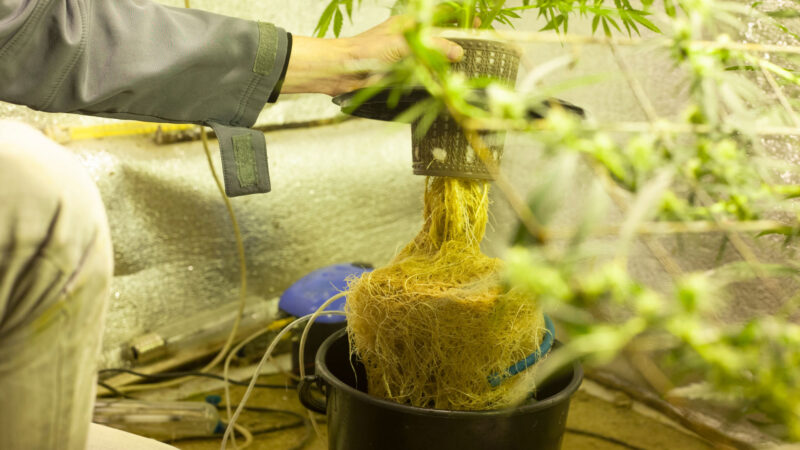
The primary advantage of aeroponics for cannabis cultivation is the exceptional root health it promotes with optimal nutrient and environmental control. Cannabis plants produce higher yields and greater potency due to stress-free conditions and efficient nutrient uptake.
Similar to hydroponics, aeroponics requires high degree of control and continuous monitoring to maintain optimal growing conditions. Cannabis roots are very sensitive in the aeroponic system; if the misting system fails, roots can dry out rapidly which leads to stressed plants.
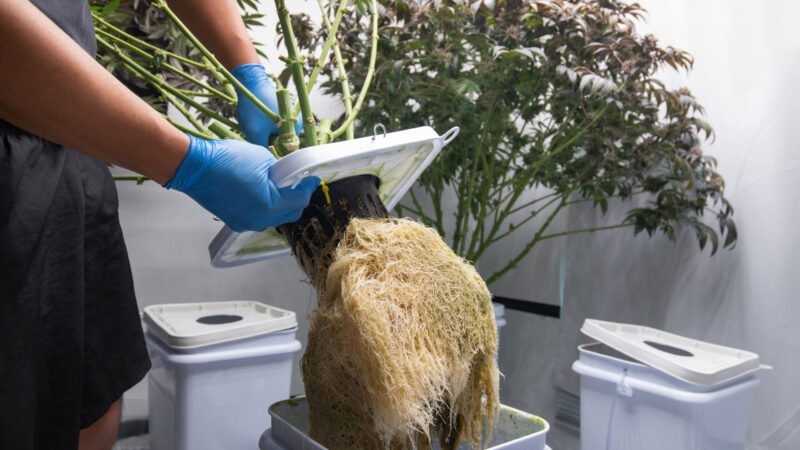
Aeroponic systems are efficient in water and nutrient usage. Because the solution is misted directly onto the roots and recirculated, less water is wasted compared to soil-based growing or even other hydroponic techniques. This makes aeroponics a more sustainable option for growers concerned with environmental impact.
While the benefits are considerable, aeroponics is not recommended for beginners due to its complexity and need for more growing experience. The risk of root drying due to system failure or mismanagement is high, and such an occurrence can quickly escalate into a crop failure. Beginners might find the steep learning curve and initial setup costs daunting.
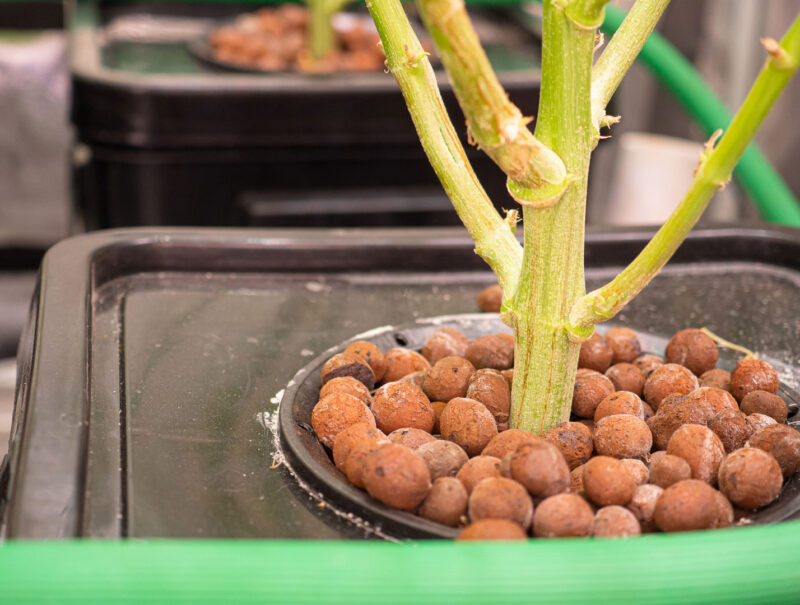
Troubleshooting problems in an aeroponic system often requires a good understanding of the equipment and plant physiology, making it less forgiving than soil-based or simpler hydroponic setups. Therefore, while aeroponics can be incredibly rewarding, it is best suited for those who have experience with hydroponics or who are willing to invest significant time and resources into closely managing their cannabis cultivation environment.



